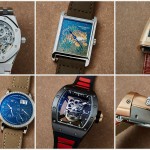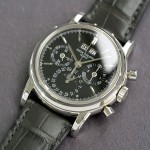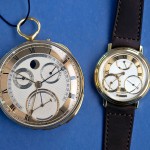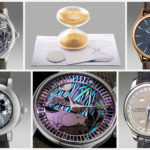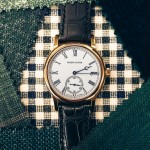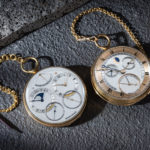Highlights: Independent Watchmaking at Phillips Hong Kong
From a possibly unique DB DBS to an F.P. Journe Tourbillon "China".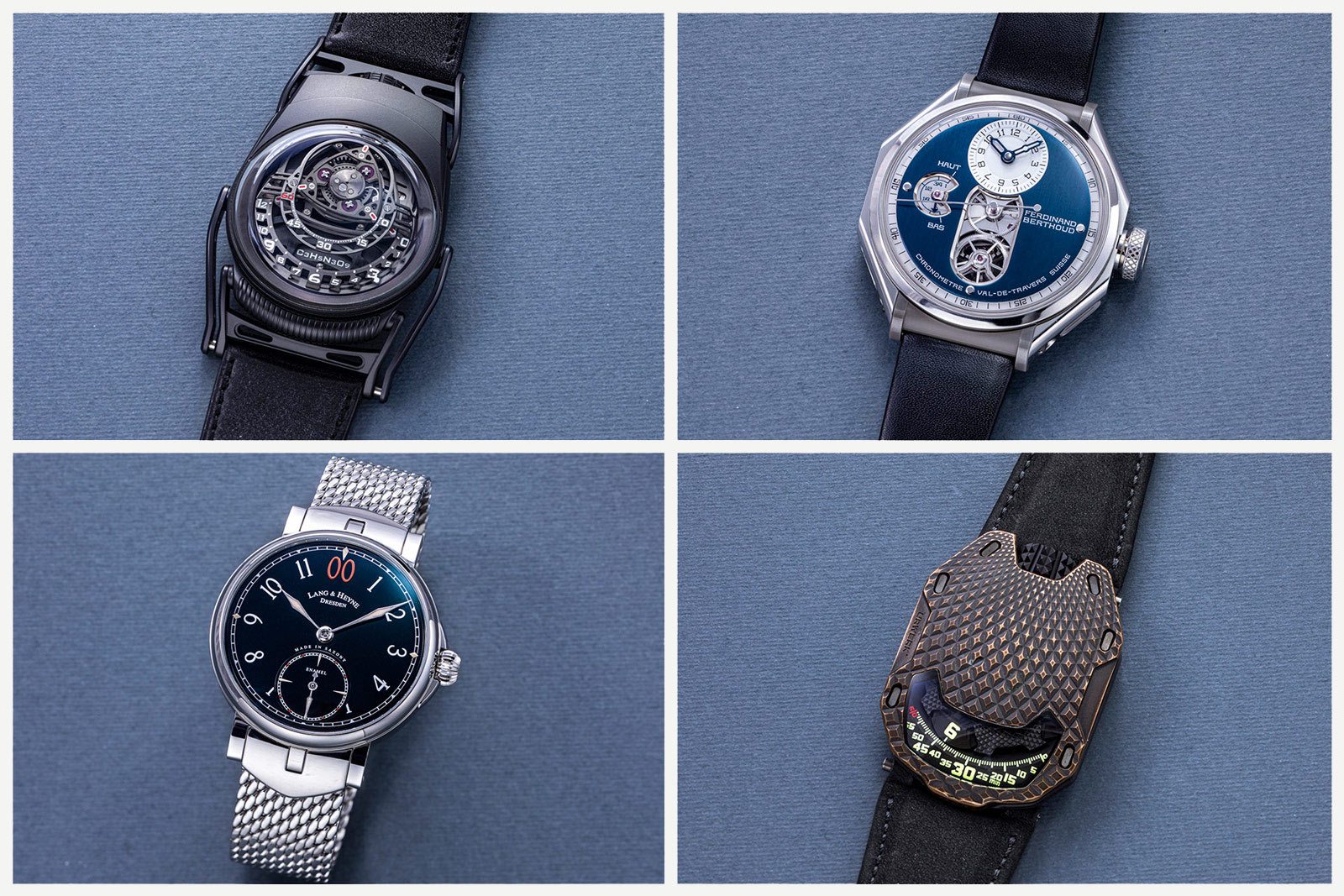
After a weekend in Geneva, the spring auction season returns to Hong Kong where Phillips will stage The Hong Kong Watch Auction: XIV over two days, with the first session on May 27 followed by the second the day after.
As is increasingly the case with all auction houses, Phillips’ upcoming sale includes of a variety of watches that represent the spectrum of independent watchmaking. The lineup encompasses some truly rare and special watches – including the F.P. Journe Tourbillon Souverain “China 2010” – along with a few one-offs like a Lang & Heyne sports watch prototype.
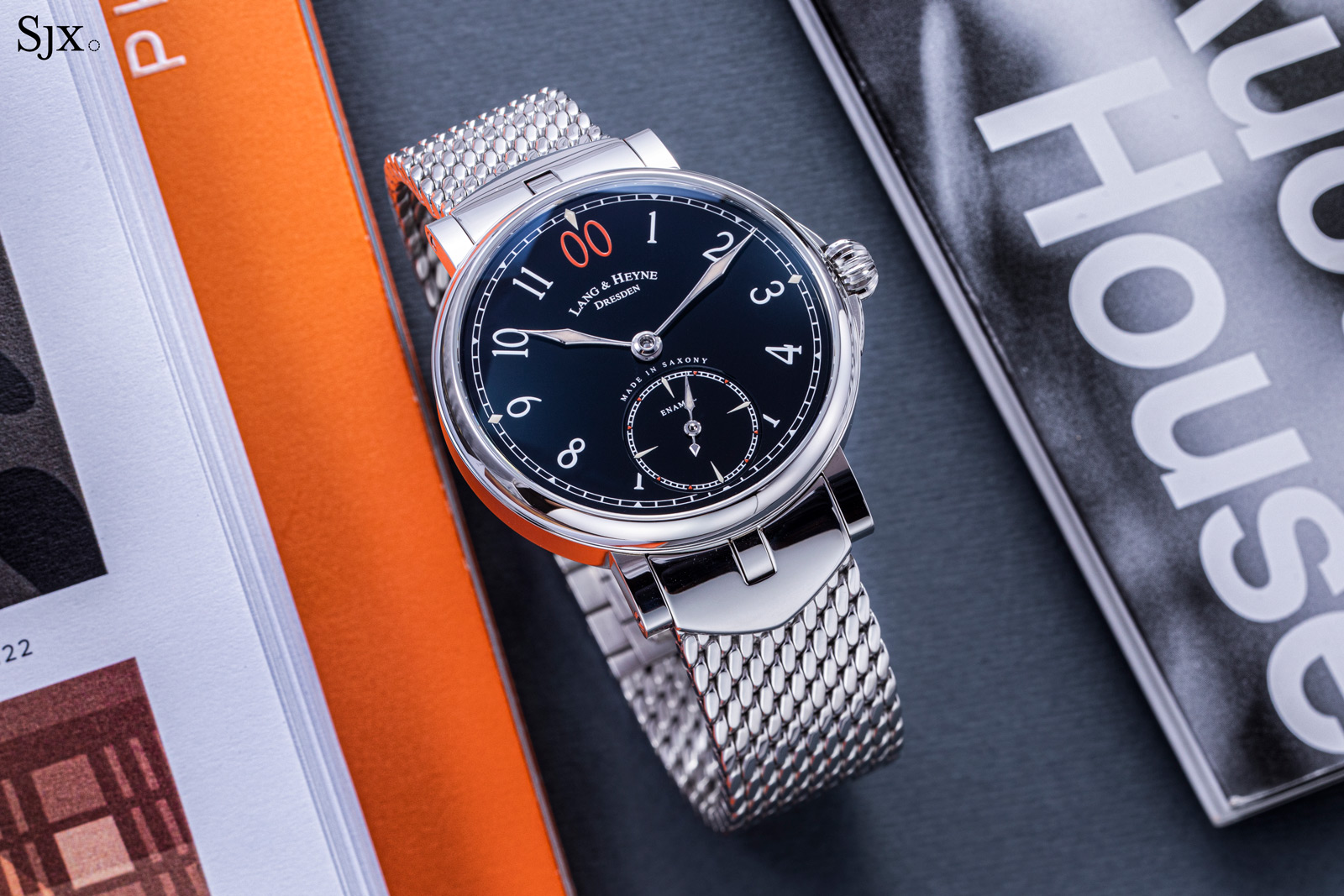
The prototype Lang & Heyne Friedrich II Remontoir
We round up seven of the notable examples of independent watchmaking in the sale, including a little-known and short-lived collaboration between MB&F and Urwerk as well as a striking De Bethune DBS in rose gold and blue.
Registration to bid and the full catalogue can be accessed here.
(All of the photos are our own, except those of the DBS-R and Tourbillon Souverain “China” that were provided by Phillips.)
Lot 834: C3H5N309 “Nitro” ZR012 Black by MB&F and Urwerk
While MB&F and Urwerk are amongst the most prominent names in avant-garde watchmaking, the 2012 collaboration between the two is ironically obscure.
Named after the chemical name of nitroglycerin – the key ingredient in dynamite – C3H5N3O9 was conceived as an all-new brand established by the founders of MB&F and Urwerk. C3H5N3O9, or Nitro for short, was a short-lived venture that only rolled out one model.
The watch was naturally was a combination of each brand’s specialty, namely ingenious time displays by Urwerk and MB&F’s design. That was watch the ZR012, which has a time display conceived by Urwerk and a designed by MB&F. Both elements are unique as neither is found in the watches of the respective brands.
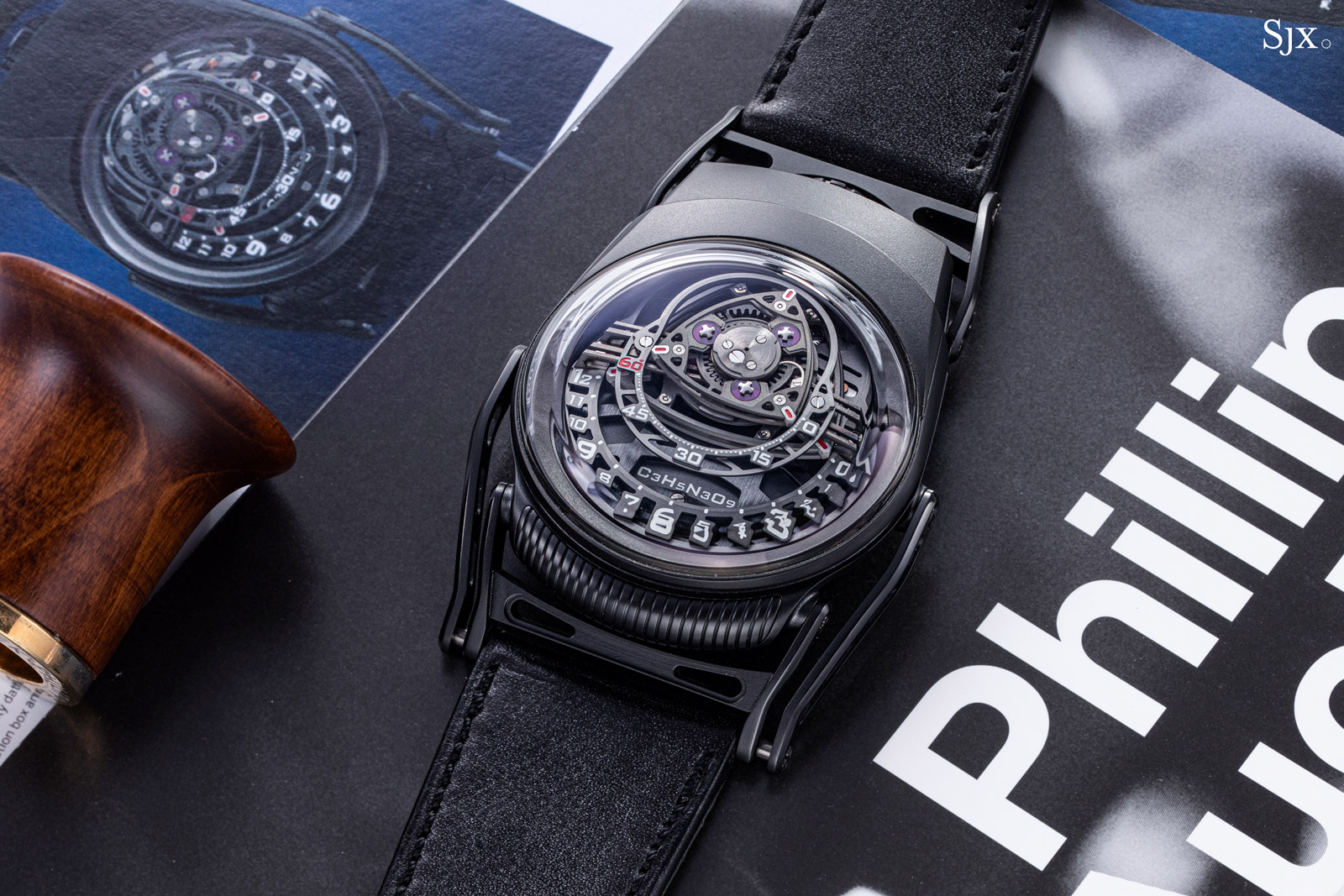
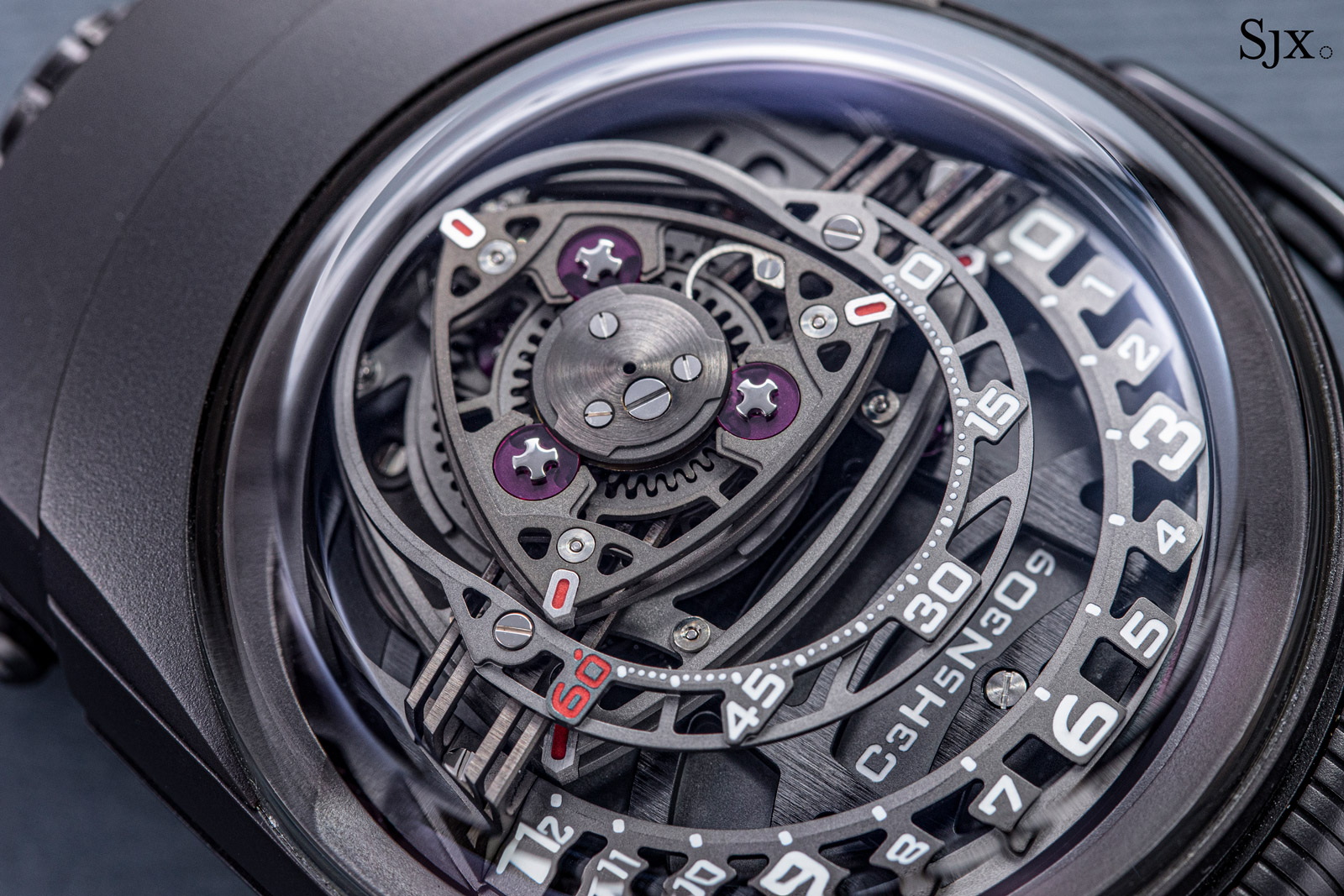
Inspired by a Wankel engine, the time display consists of a series of Reuleaux triangles, one each for the hours and minutes. The triangles rotate within a pair of oblong tracks, each with a time scale on its lower half – minutes on the upper ring and hours on the lower ring.
While the mechanism is reminiscent of Urwerk’s wandering hours display as found in the UR-100, it is entirely different in both functions and form. And particularly intriguing is the fact the triangles has a locus of an oblong, though the movement is slow and it isn’t obvious at a glance.
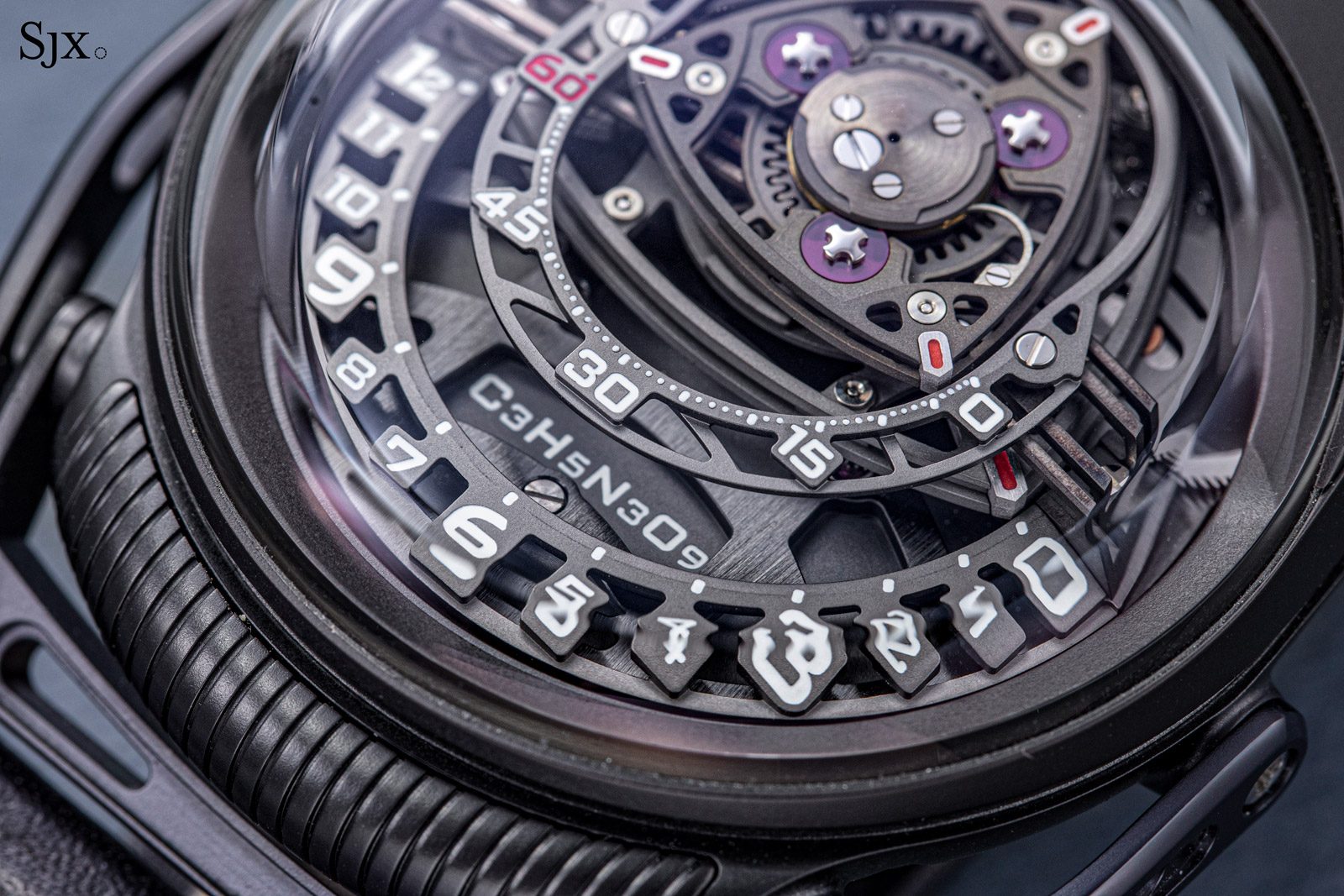
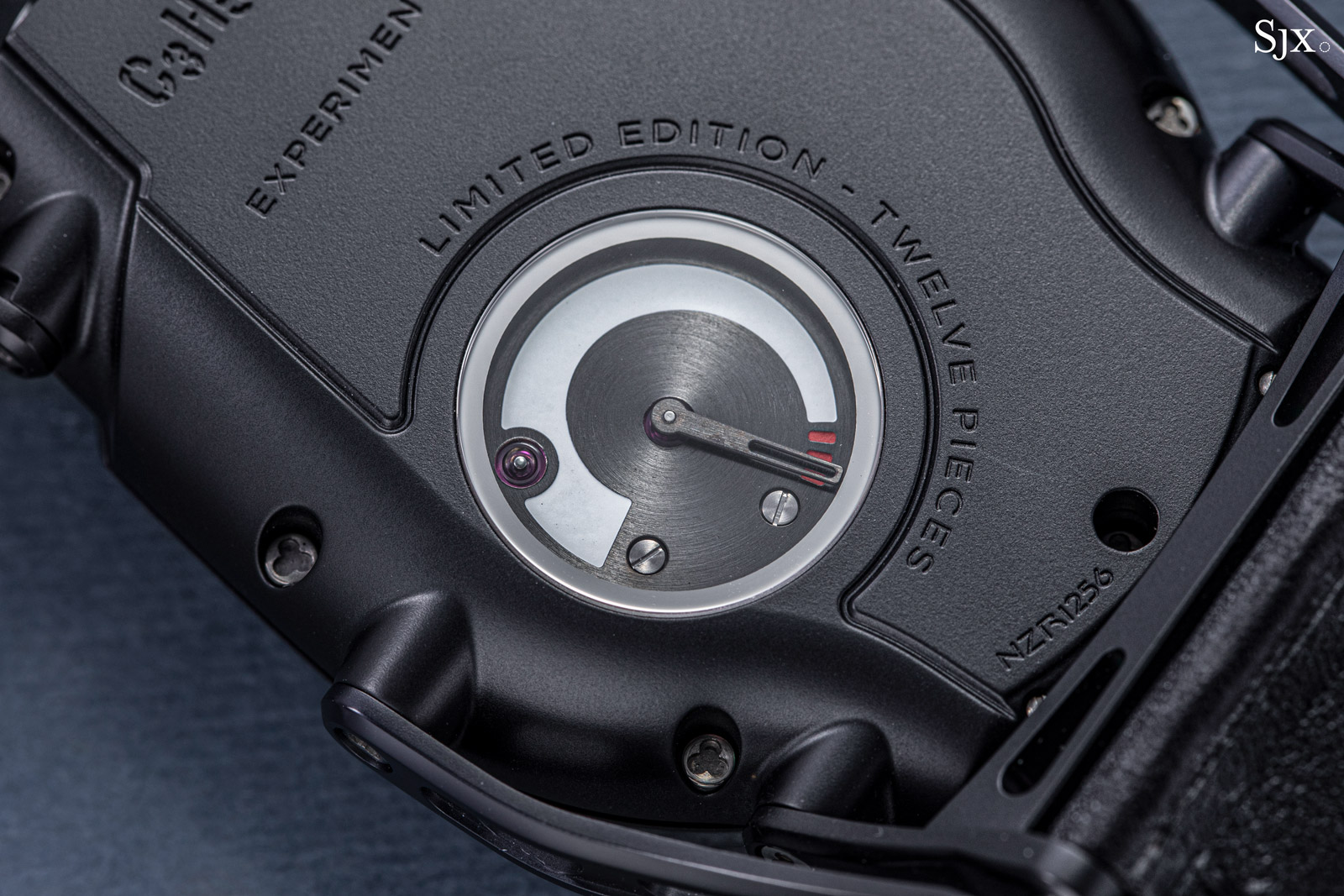
The power reserve indicator neatly tucked away at the back in typical Urwerk fashion
Just as notable as the watch itself was the fact that it was original sold exclusively by each of the two brands, a move that caused considerable friction with their retailers at the time. Today, of course, the balance of power has tilted in favour of the brands, since demand for watches far exceeds supply.
This example came about because of those frictions. The first version of the ZR012 that was sold by the brands direct to clients had a zirconium case in its natural state, but a second, all-black edition was later launched as an exclusive for Singapore retailer The Hour Glass. It was identical save for the case, which was black-coated zirconium. And the second edition was the swan song for both the model and the brand, making it an interesting footnote in the development of each brand.
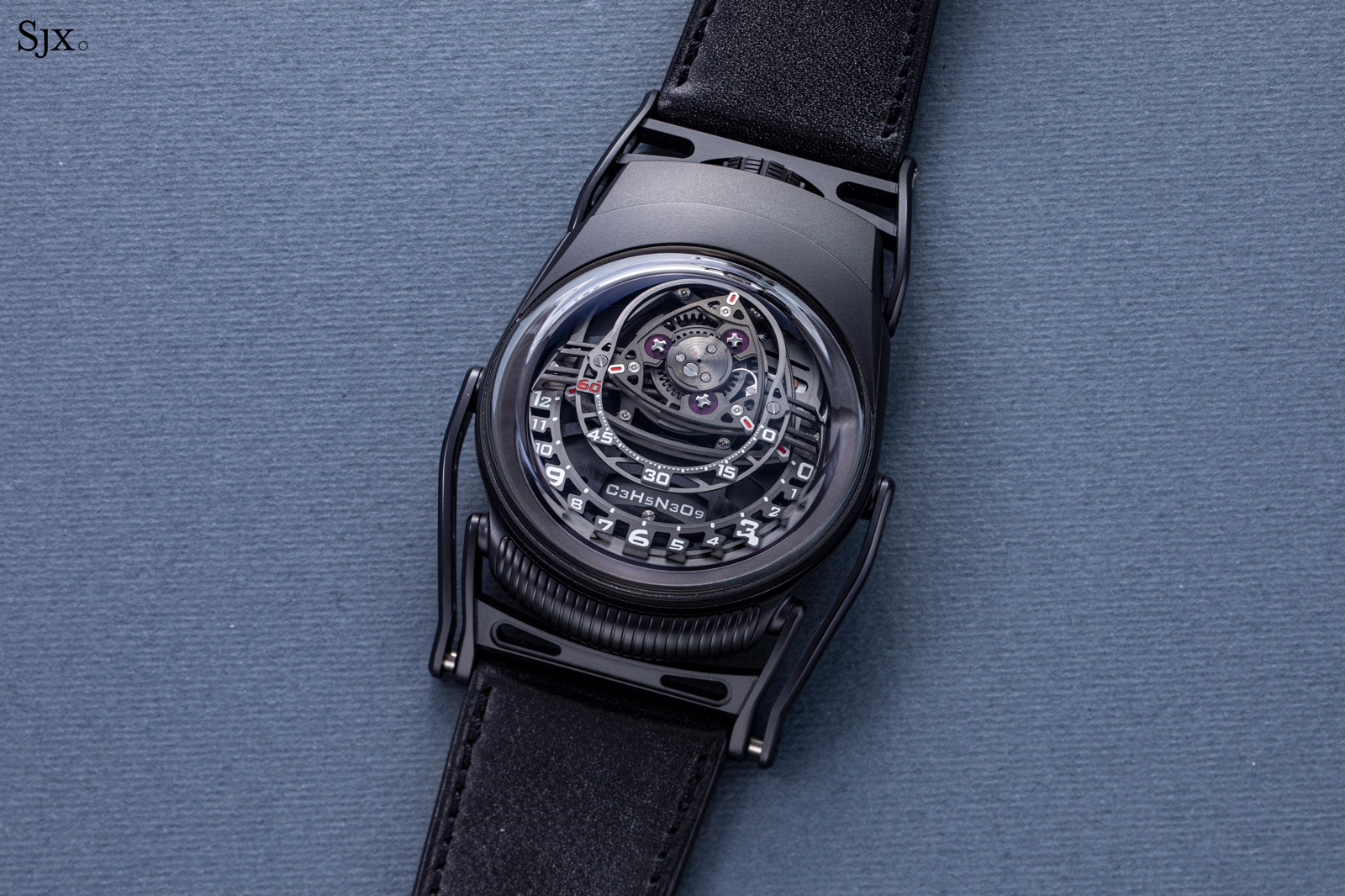
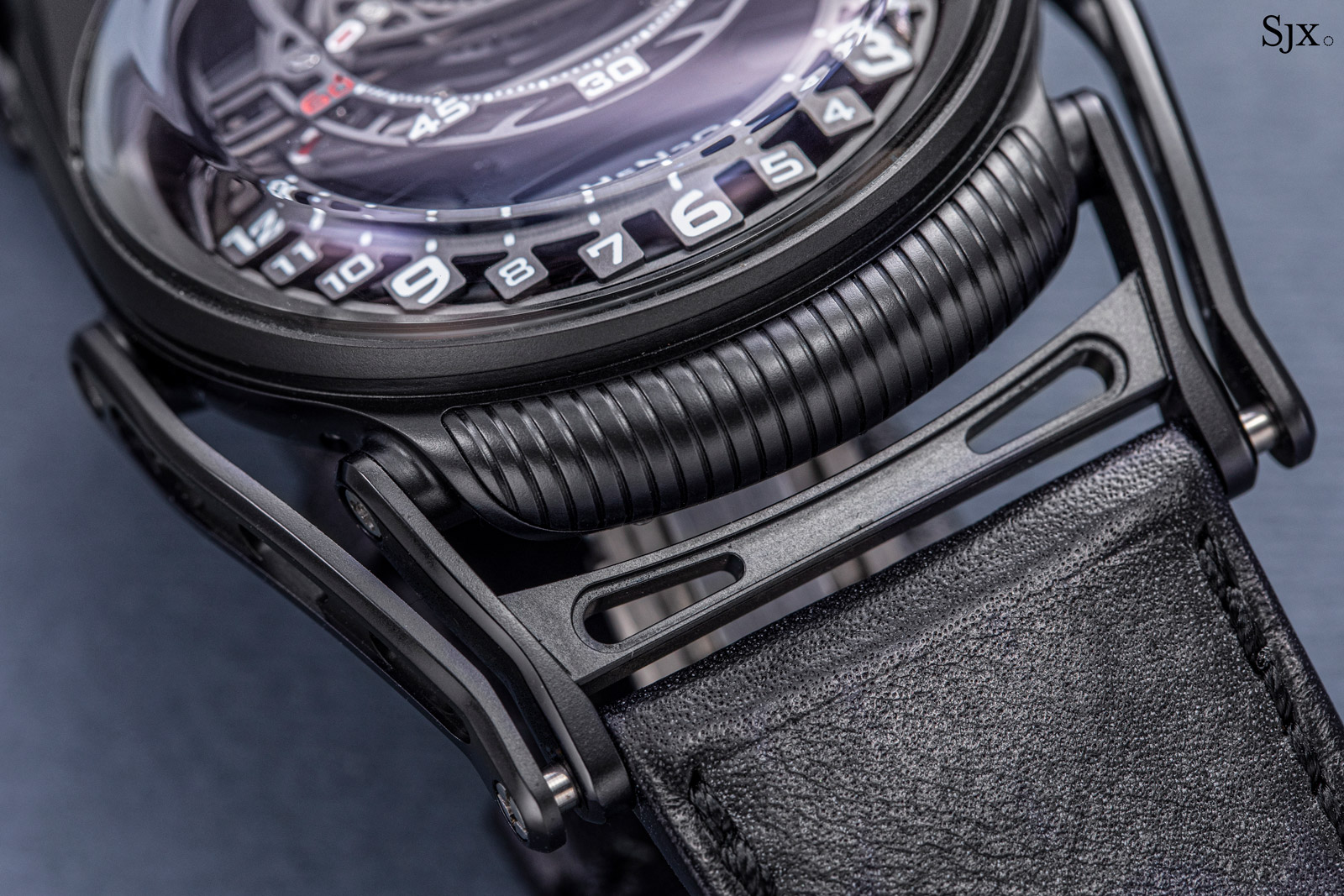
Being all black means the watch appears slightly smaller, although it is actually very large
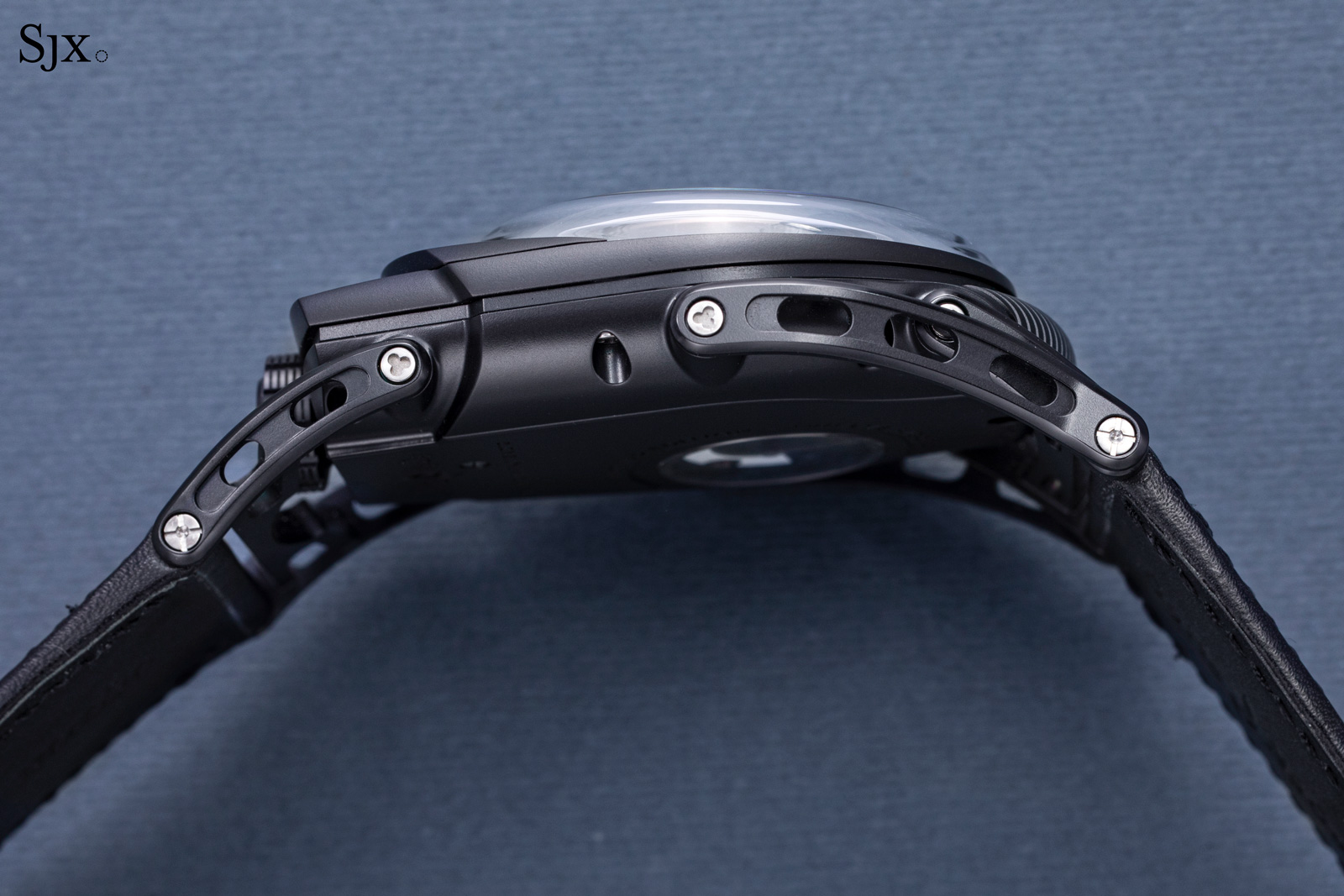
The case is a complex construction that is partly disguised by monochromatic finish
The ZR012 “Nitro” has an estimate of HK$350,000-650,000, or about US$44,900-83,300, a modest sum compared to the original retail price of just over CHF100,000. As a point of comparison, a first edition ZR012 just sold at Phillips’ Geneva auction in early May for CHF163,800 including fees. Full lot details here.
Lot 835: Urwerk UR-105 T-Rex
Urwerk typically makes hyper-modern watches, but a handful of its offerings are peculiarly retro, sometimes prehistoric. One of these is the aptly named UR-105 T-Rex.
The T-Rex is one of the many, many editions of the UR-105, the brand’s entry-level model that was produced from 2014 to 2021. Still it manages to stand apart with its aggressively patterned bronze case with a heavily aged finish – both features were a first for the brand (and later repeated on the second T-Rex model).
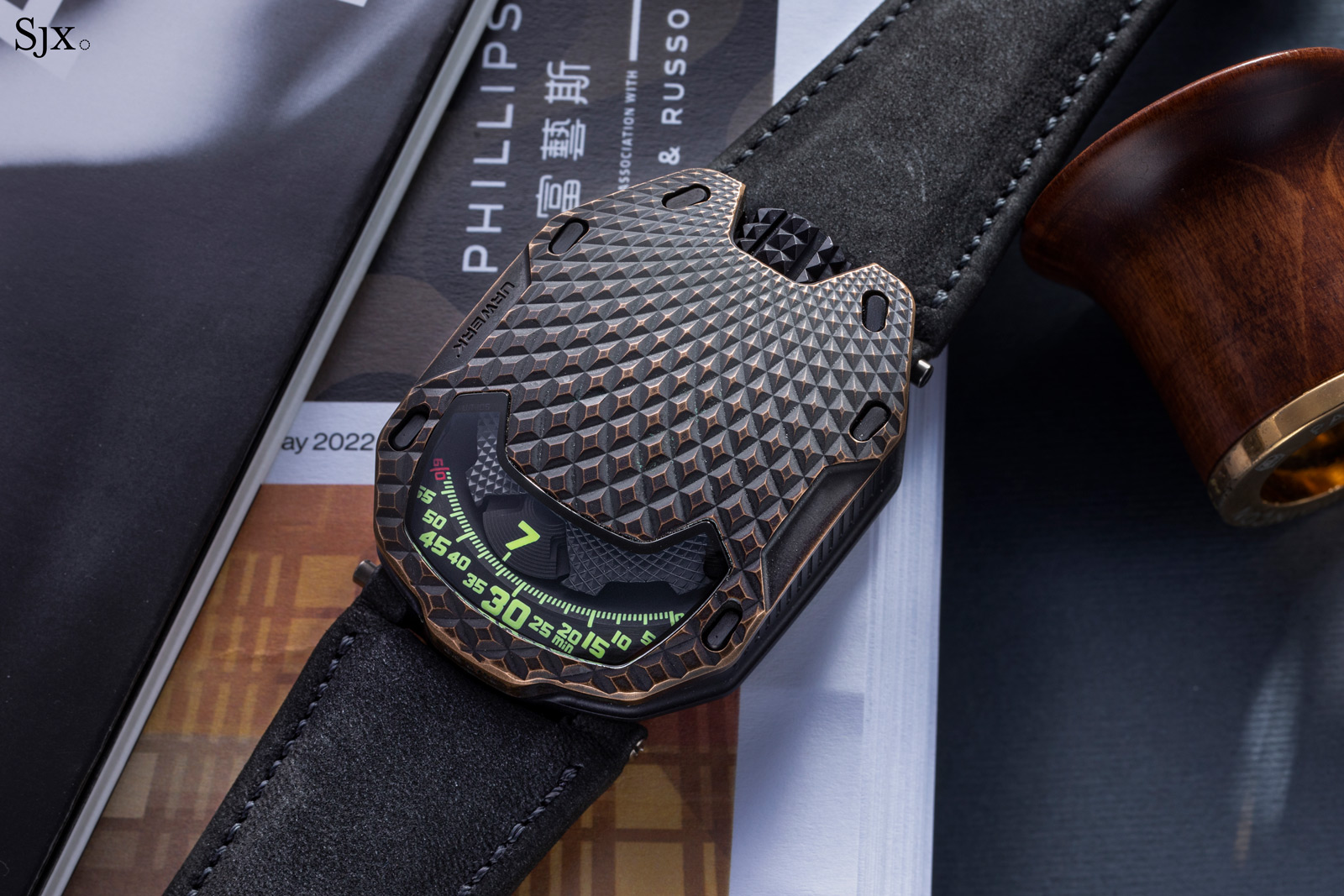
The T-Rex is all about the impressively-machined front plate covered in graduated hobnail pattern. Up close it reveals consistent, clean, and sharply defined details. And although the aged finish is artificial – it’s a coating rather than the natural patina – it is attractive and appears natural.
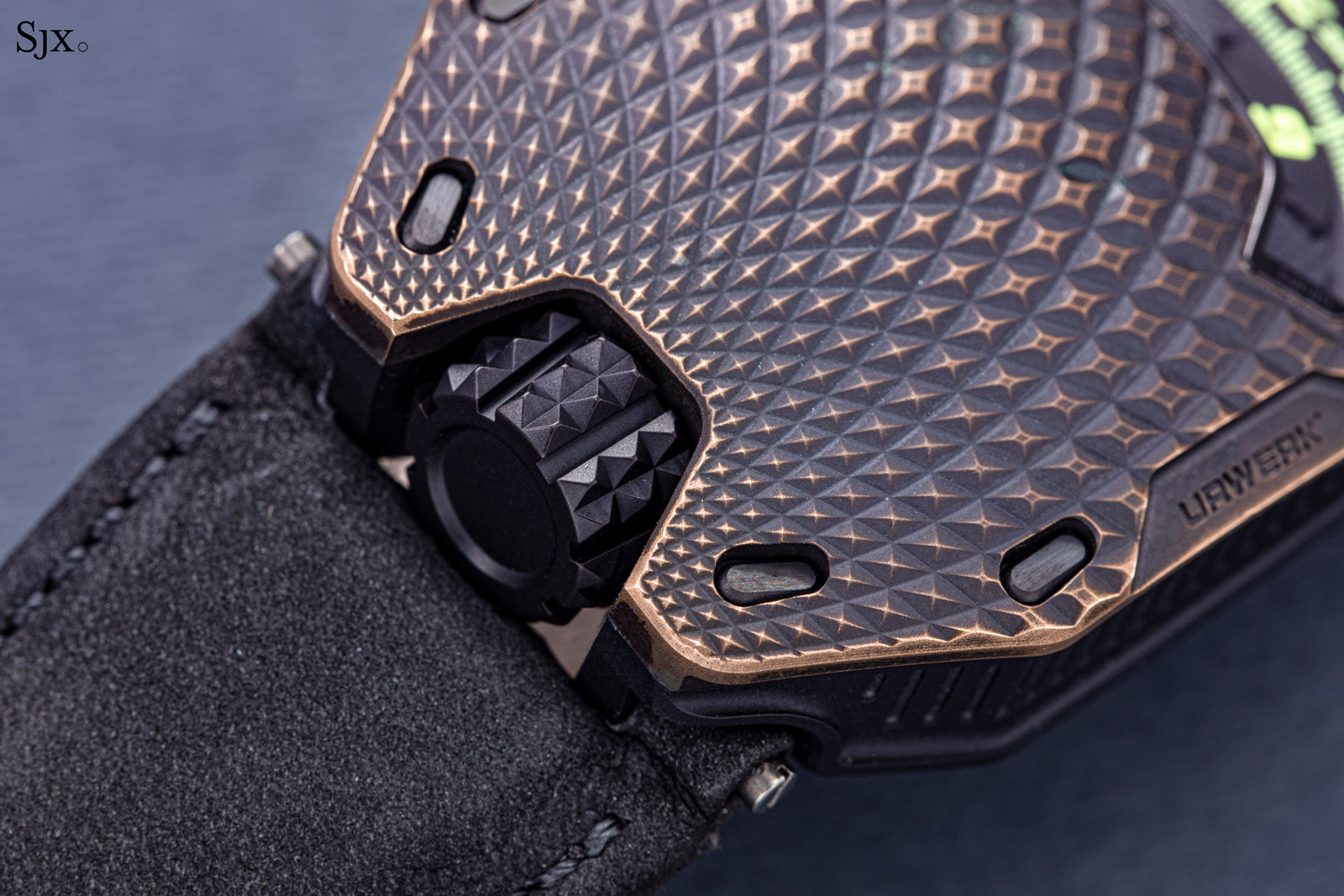
Even the fine pattern on the front plate adjacent to the crown is impressively detailed
While the hobnail pattern is now found on other models, it still remains an unconventional idea that’s typical for Urwerk, which is all about futuristic design.
But the worn, engraved pattern works surprisingly with the the satellite-disc wandering hours. That’s because the mechanical aspect of the watch is largely hidden. In contrast to the norm of having the wandering hours mechanism exposed, the T-Rex has a narrow window for the hours and minutes.
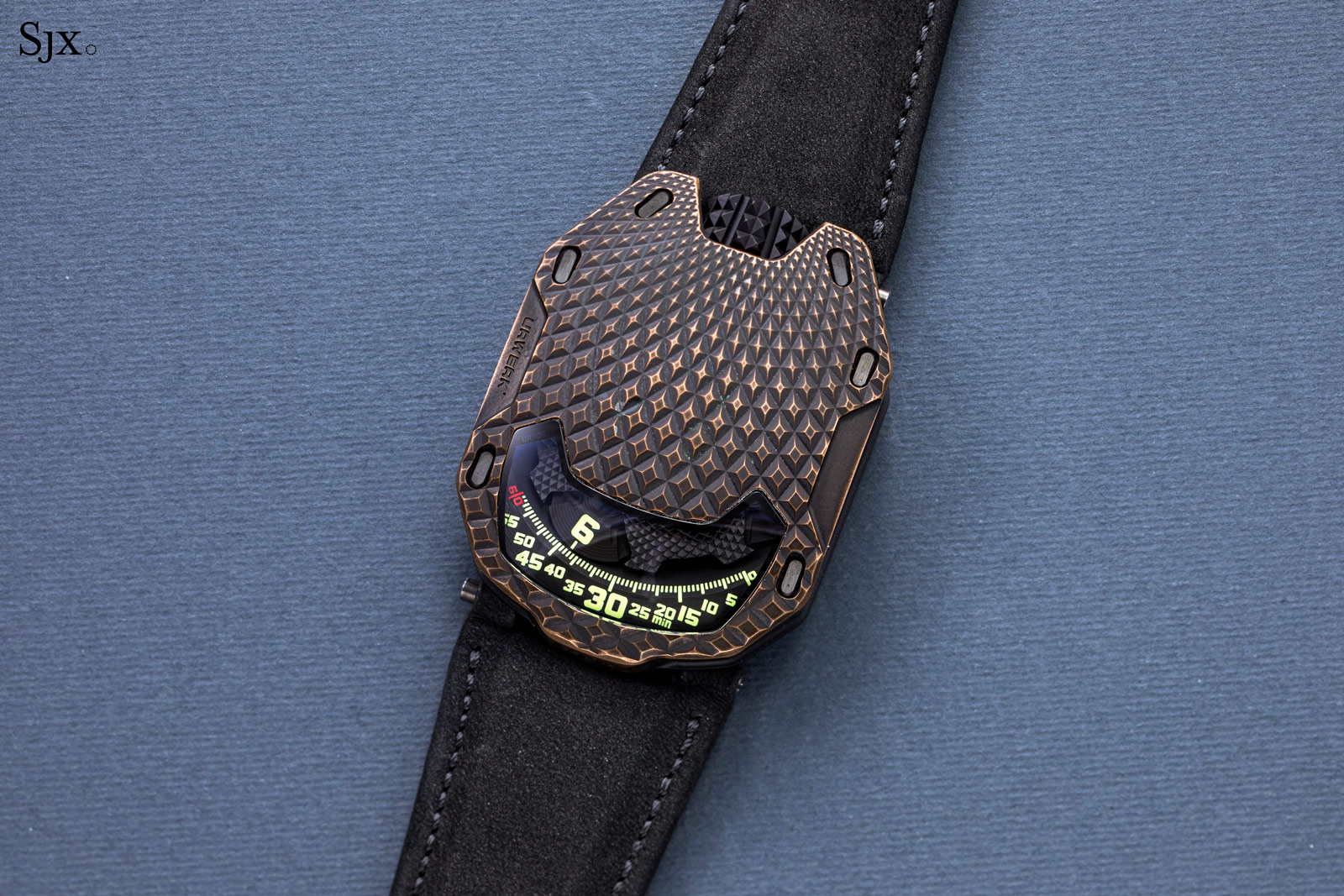
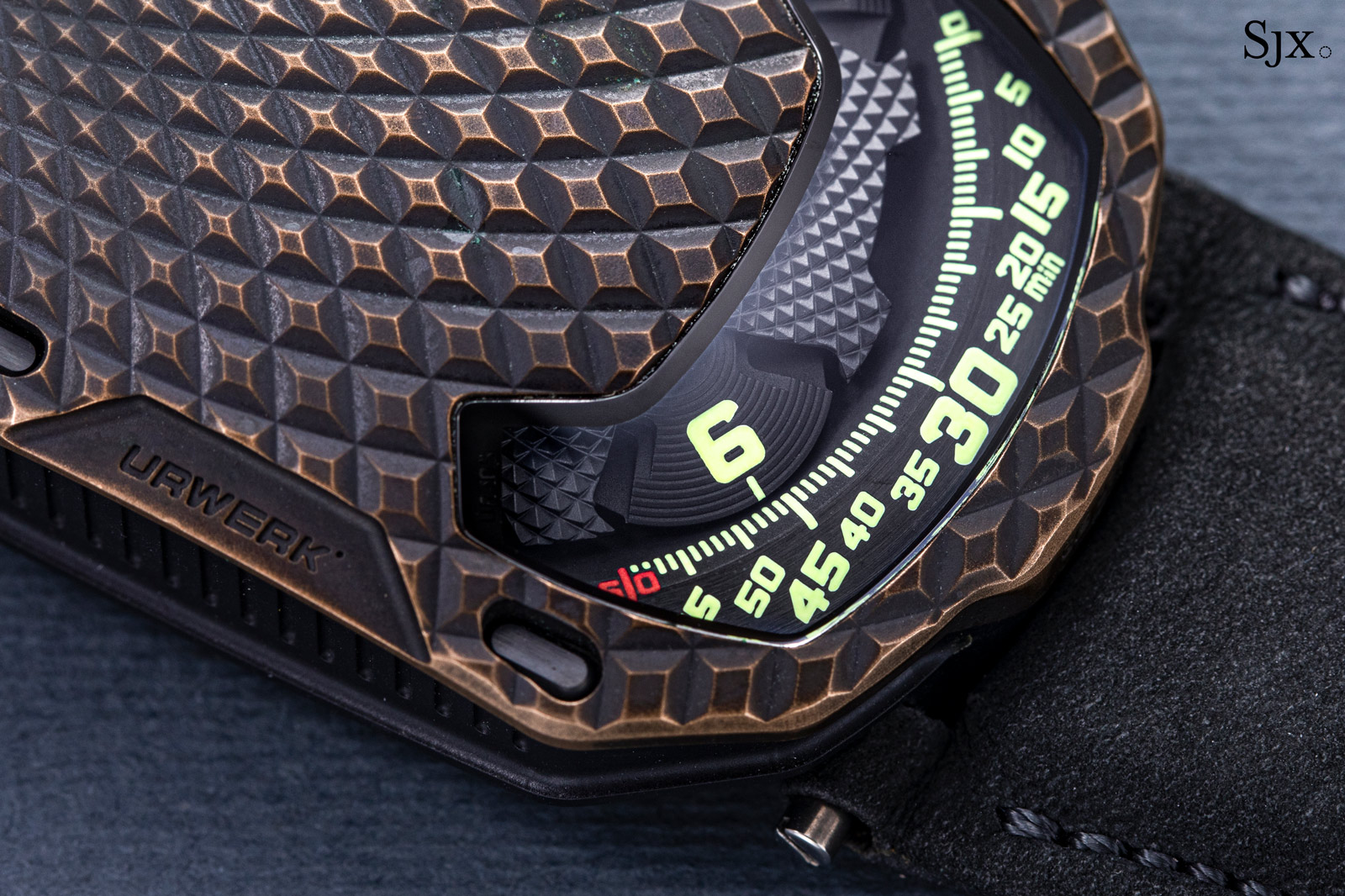
And the satellite discs are covered with a cap engraved with the same hobnail pattern but on a smaller scale
While the front is retro, the back is classic Urwerk and all-out sci-fi. It has two openings to reveal the “turbines” for the winding mechanism that the rate of automatic winding. They can be adjusted to suit the wearer’s activity, with a lever to select the winding efficiency ranging from zero to maximum winding. At zero the turbines are stationary, while at maximum winding they spin entirely freely.
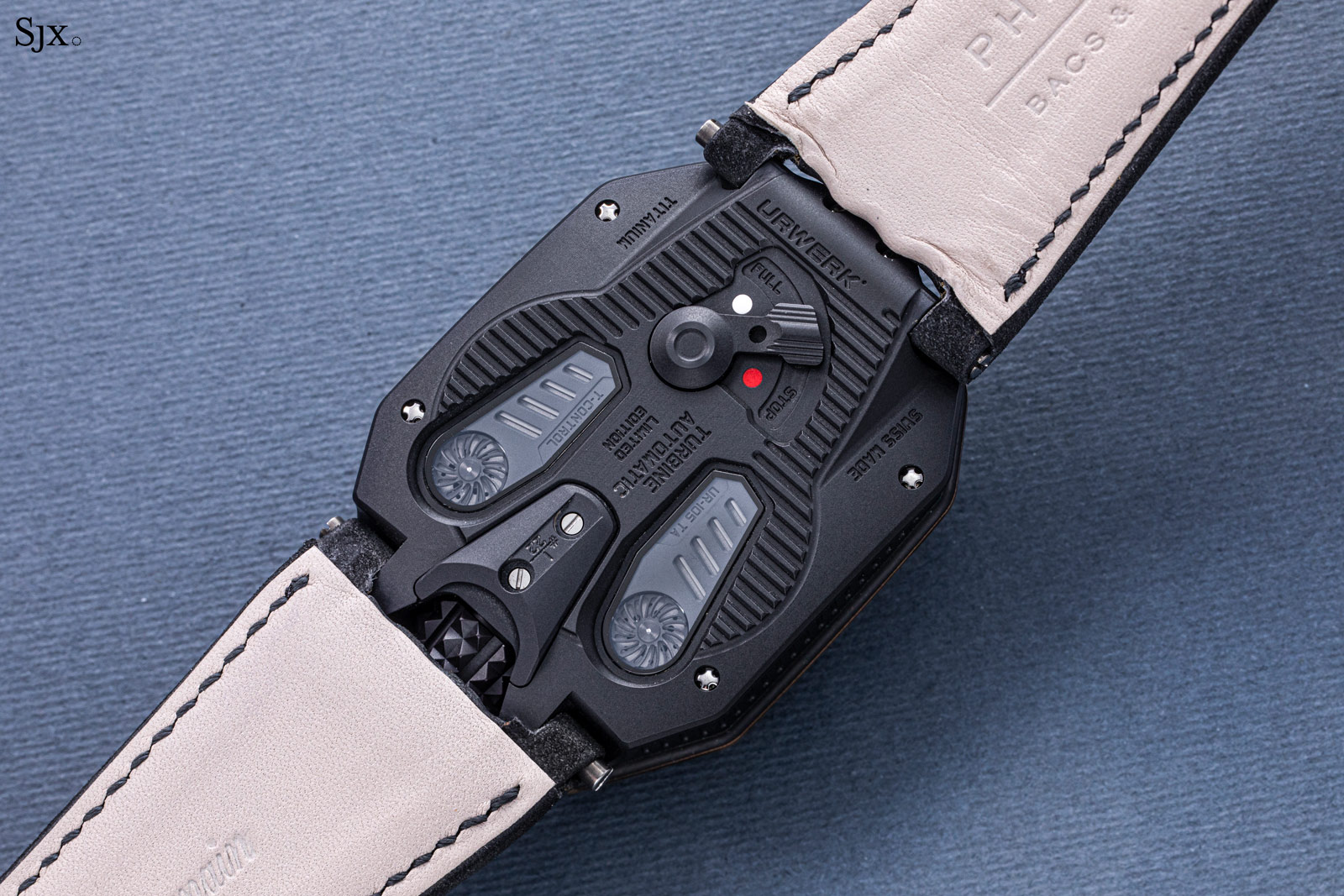
Numbered “#1/22”, this is the very first example of the limited edition. Accompanied by its original box and papers, it has an estimate of HK$200,000 – 400,000, or about US$25,600-51,300. Full lot details here.
Lot 861: Voutilainen 28Sport
While the prior lots exemplify contemporary independent watchmaking, this is the diametric opposite. But though it comes from a watchmaker known for its classical design and finish, it is still contemporary, albeit in a highly classical sense.
The 28Sport diverges from the typical Voutilainen in its design and colour, but only modestly. It is sporty, though not quite a sports watch.
The sporty aesthetic comes from the dial, which is a striking orange-on-black, but also the lugs that are slightly more angular than the trademark teardrop lugs of Voutilainen.
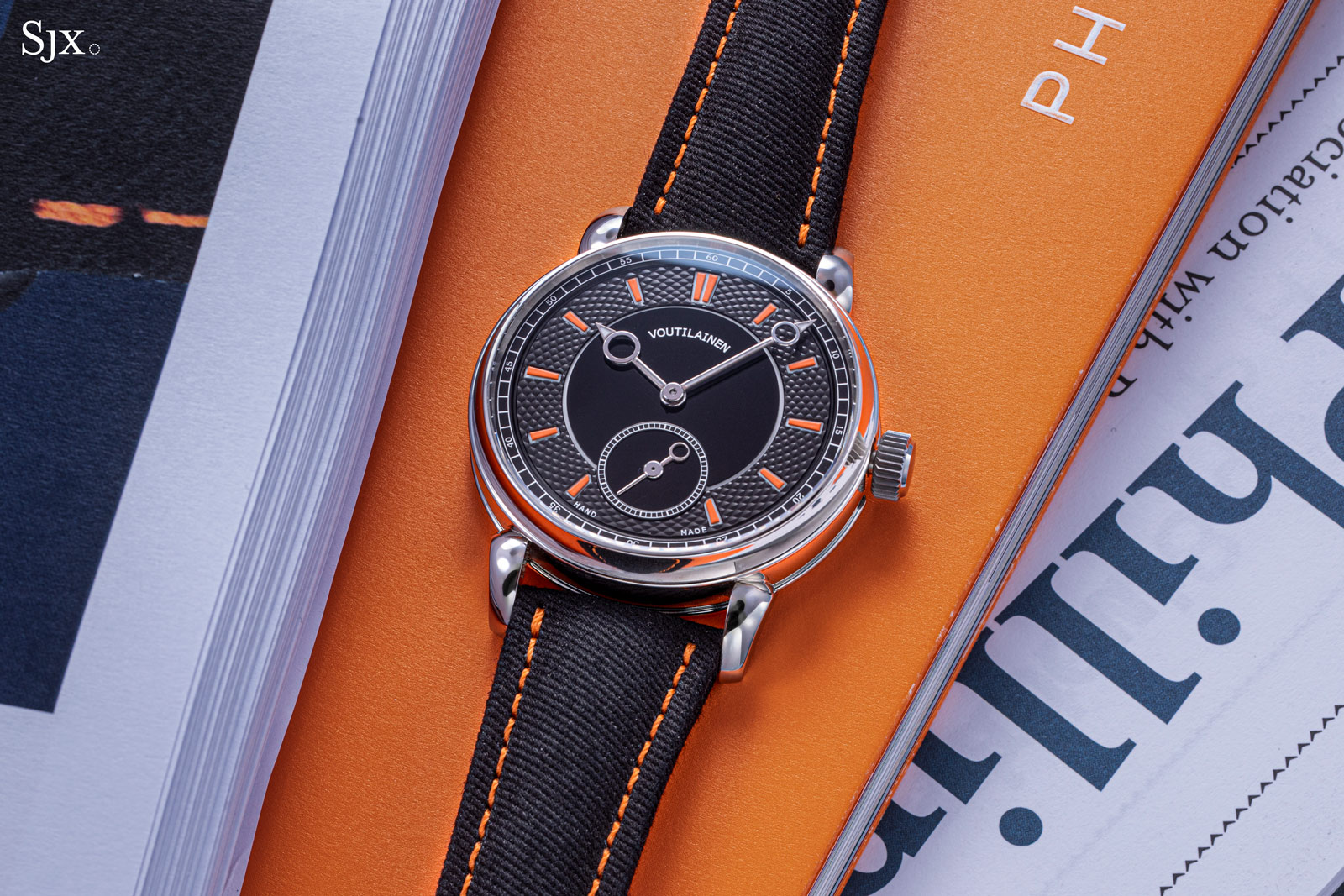
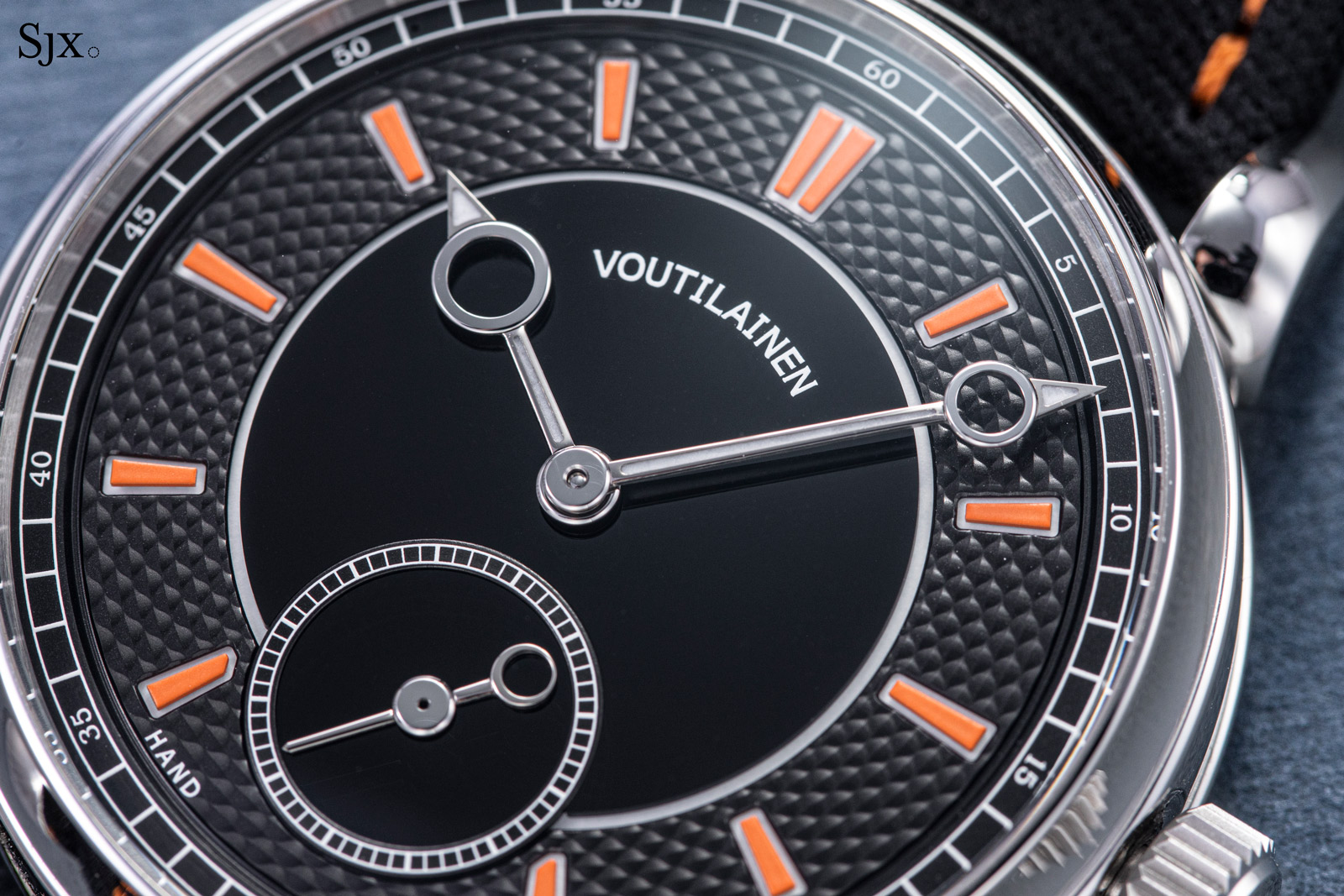
While the dial has the quintessential guilloche that is found on practically every Voutilainen watch, it is constructed differently. It’s actually a “sandwich” dial that’s made up of two layers. The upper layer has cutouts that reveal the applied orange hour markers ringed by Super-Luminova.
Although the dial construction is more elaborate than the typical Voutilainen, it is not over-designed. The central portion is a deep, glossy black that is actually a disc of polished onyx, providing contrast to the guilloche chapter ring.
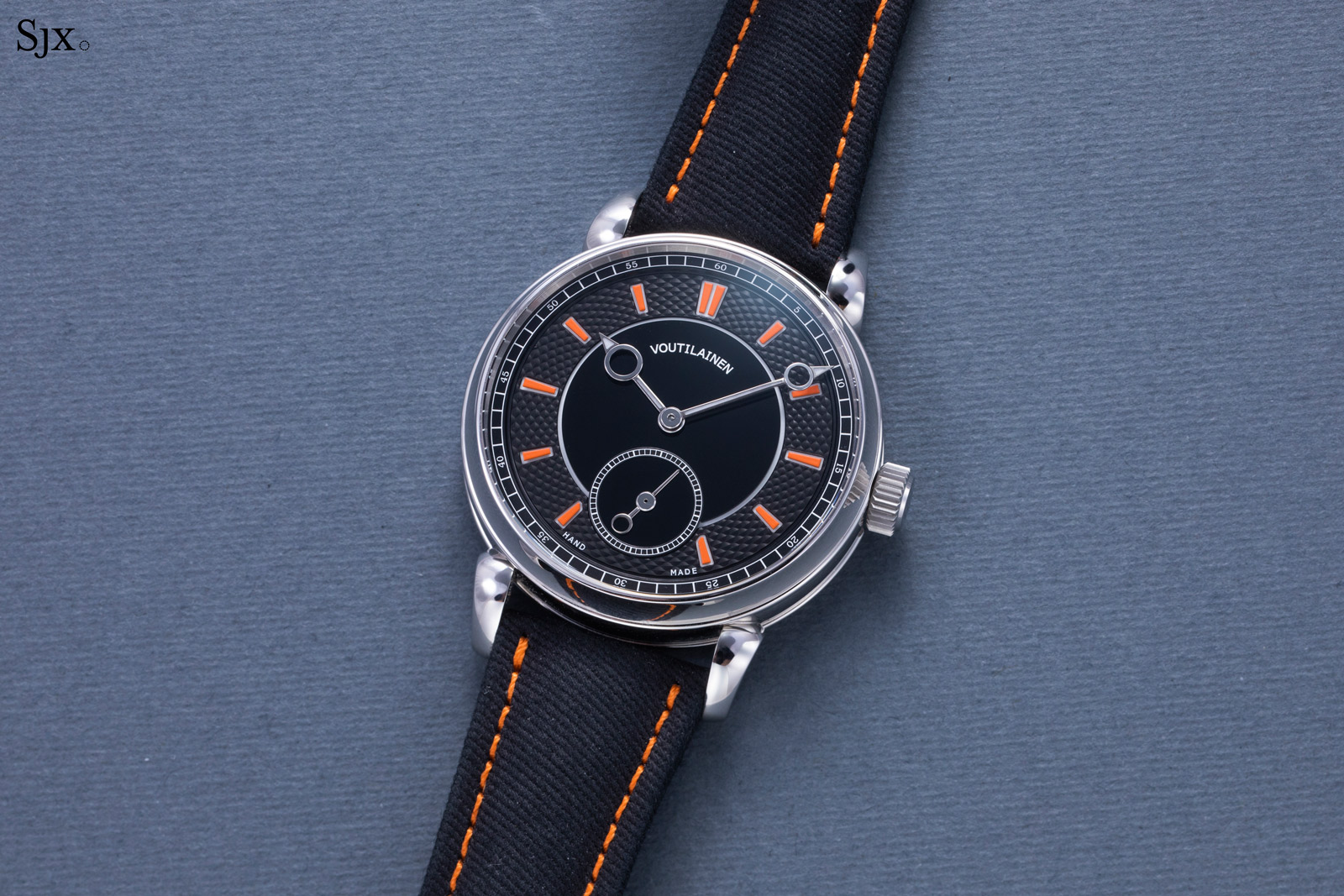
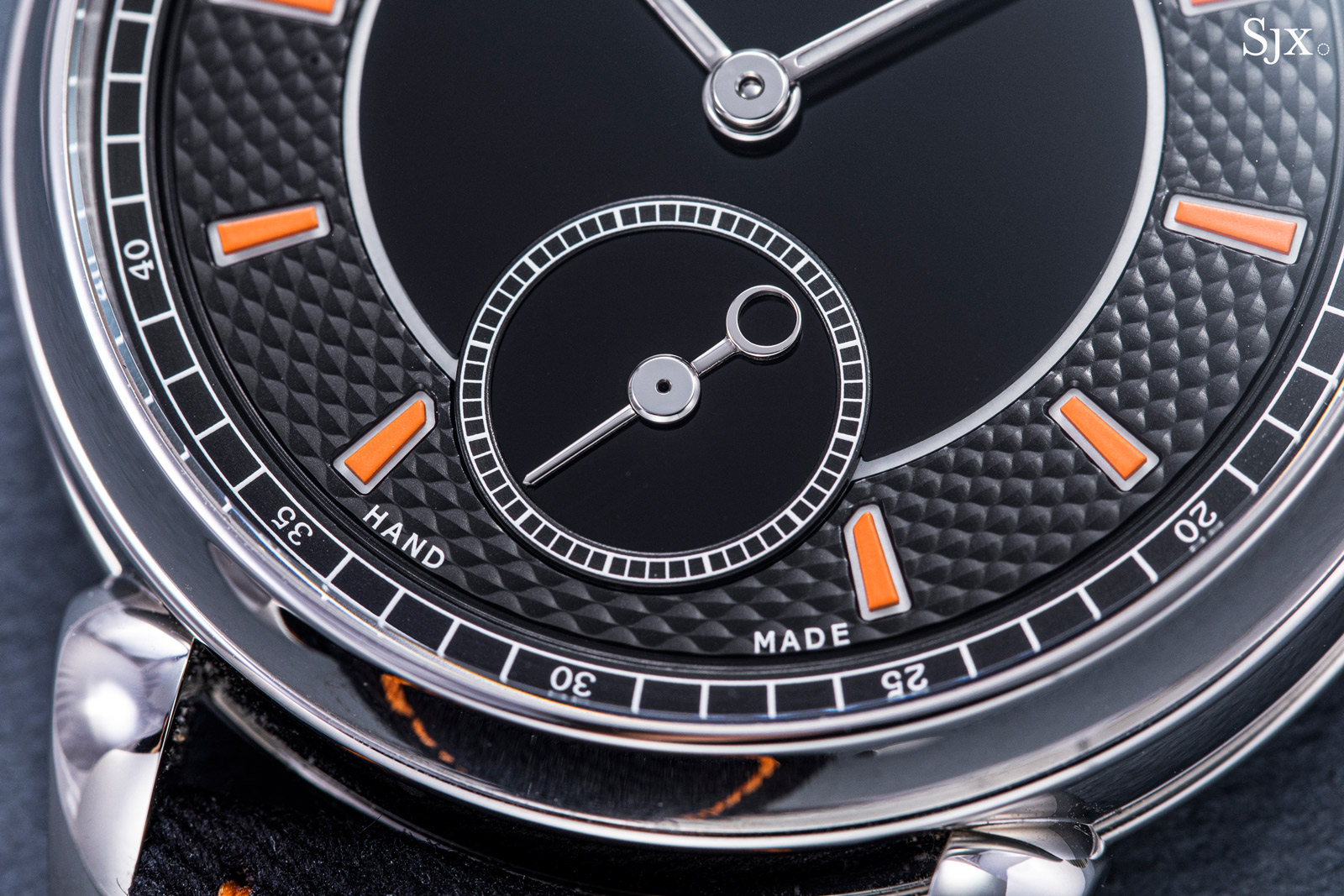
And despite being a sporty watch, the 28Sport is sized just like the standard Vingt-8 at 39 mm wide. But it is in steel, instead of a precious metal (although Voutilainen has used steel as well as titanium for the classical Vingt-8s).
The case is Voutailainen style, but with slightly more angular lugs that the brand only uses occasionally. They are essentially brand’s teardrop lugs with flattened sides, resulting in amore masculine look.
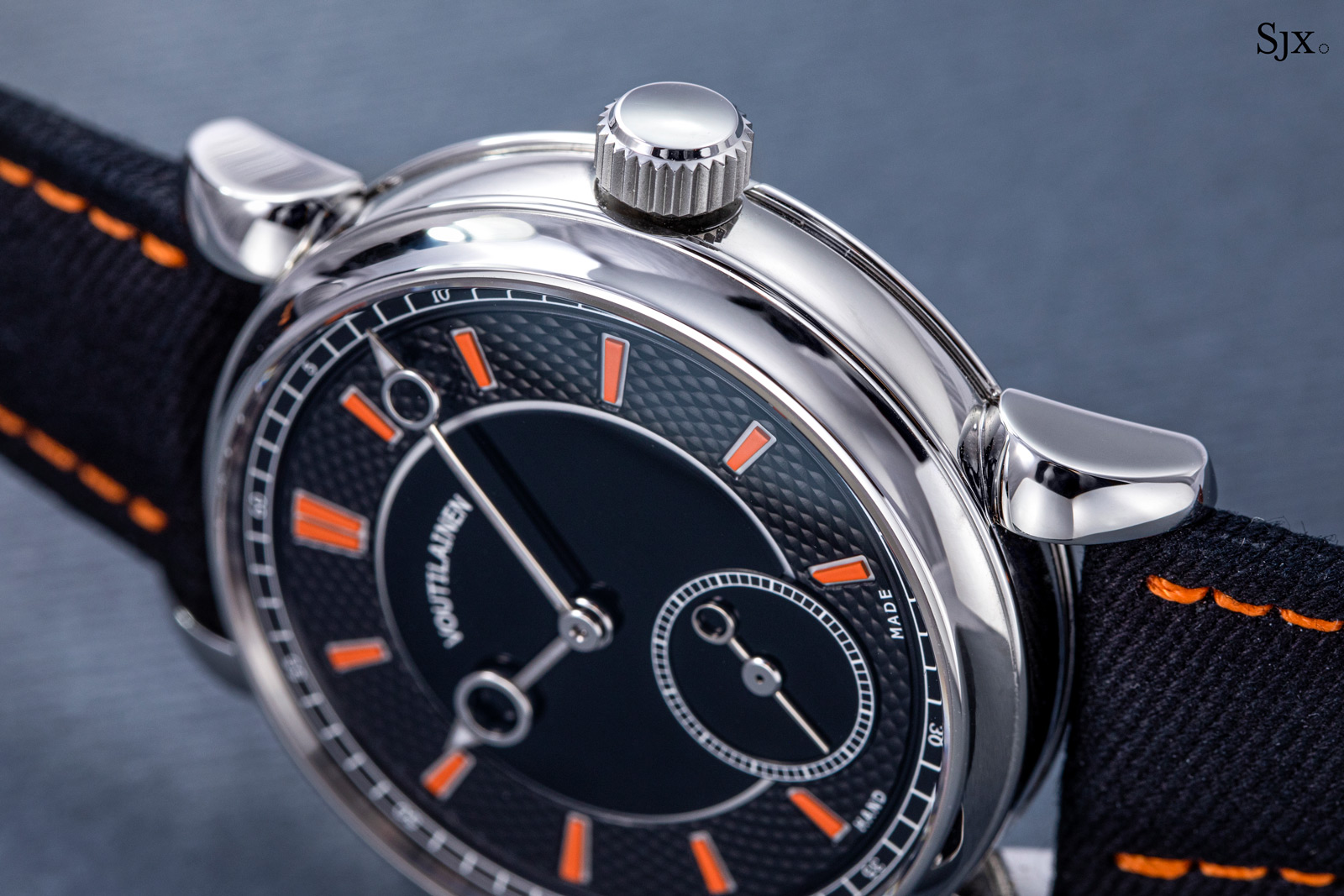
But turn it over and it is all classic Voutilainen.
The cal. 28 was the brand’s first in-house movement, conceived as a modern interpretation of an observatory chronometer movement. Amongst the notable features are the extra-large balance held by beautifully polished steel bridge.
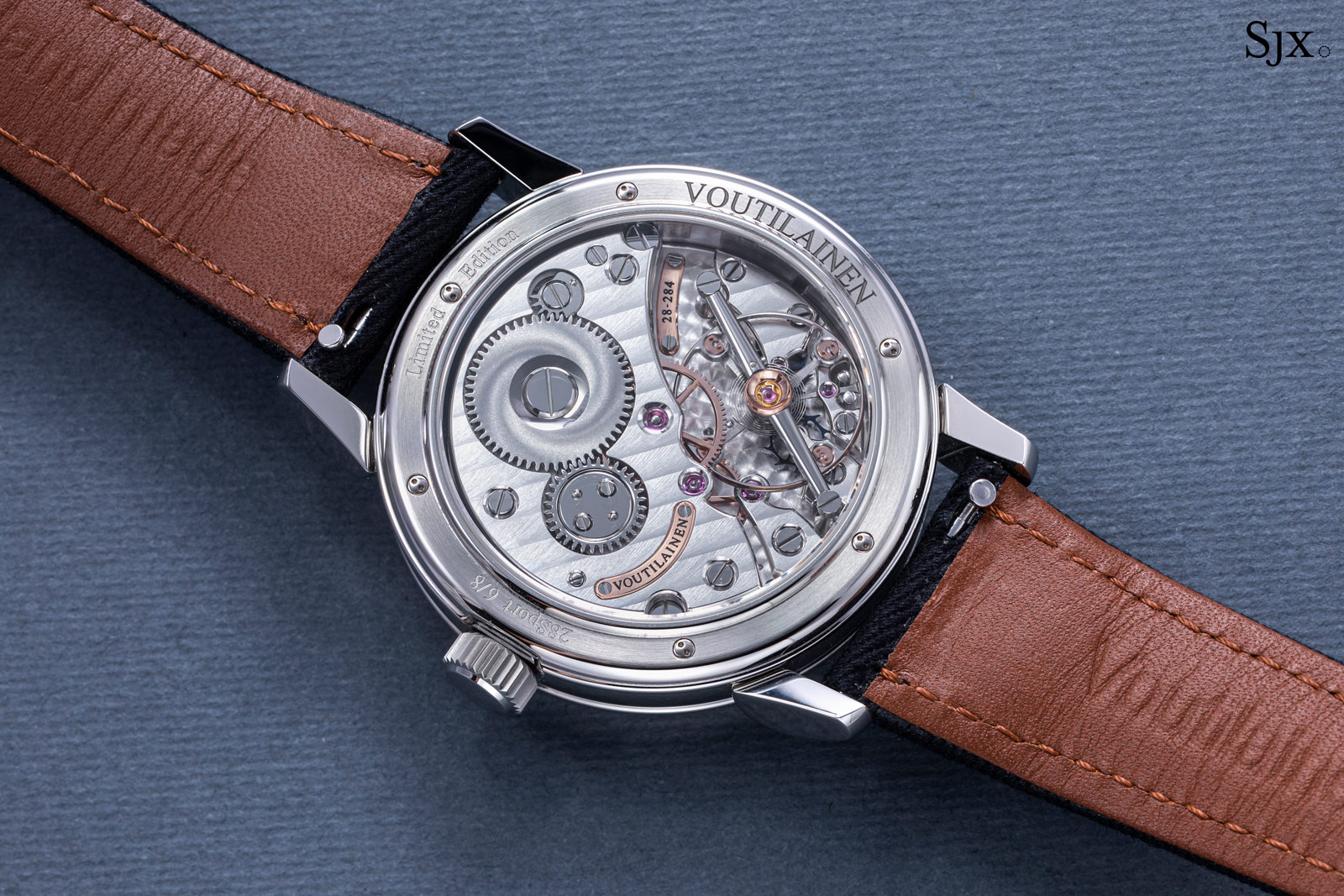
This has a three-quarter plate that does away with the additional finger bridge for the third wheel found in the first-generation cal. 28
As expected for a Voutilainen calibre, none of the details disappoint, including the lustrous snailing on the barrel ratchet wheel and the inward angles along the polished bevel of the three-quarter plate.
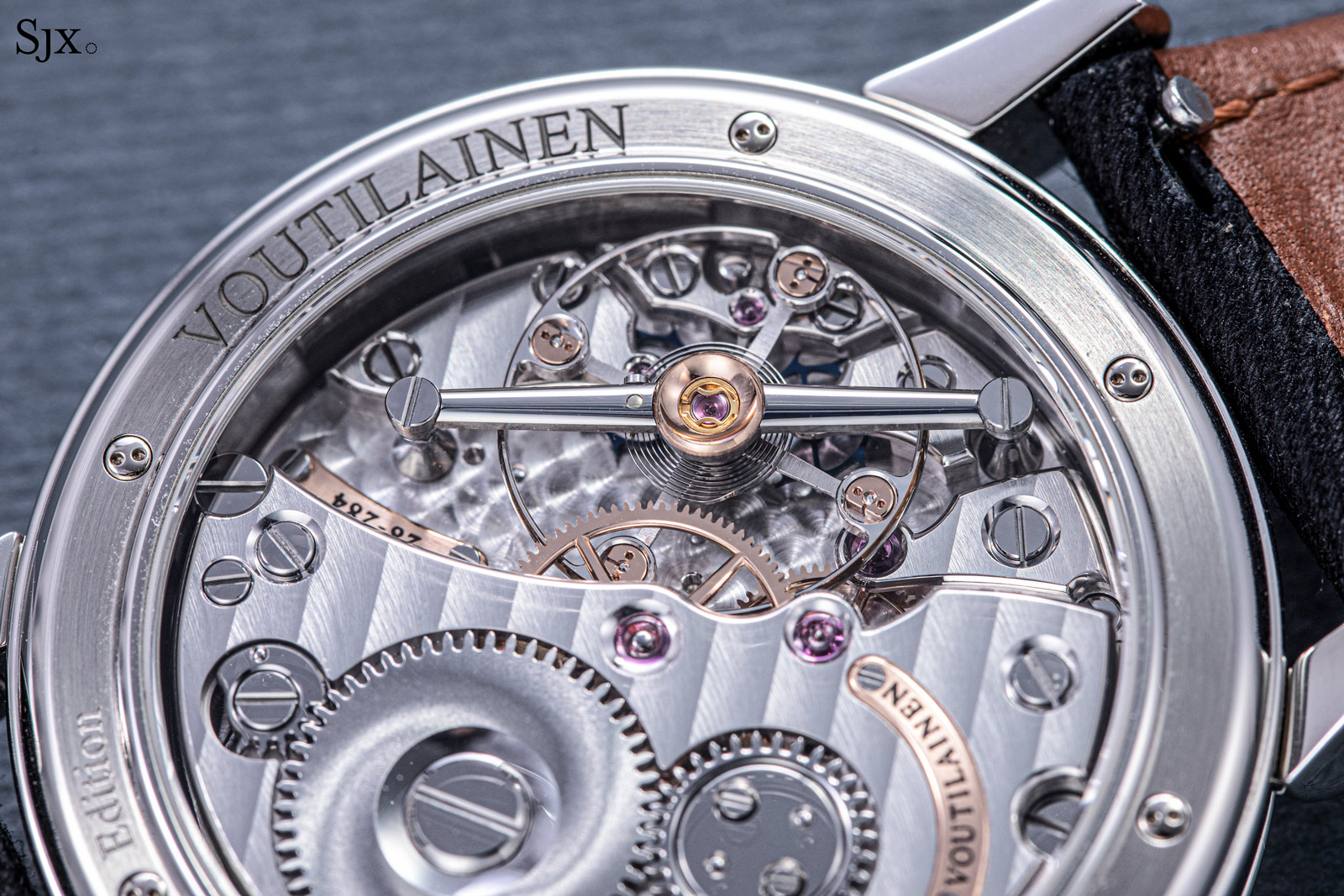
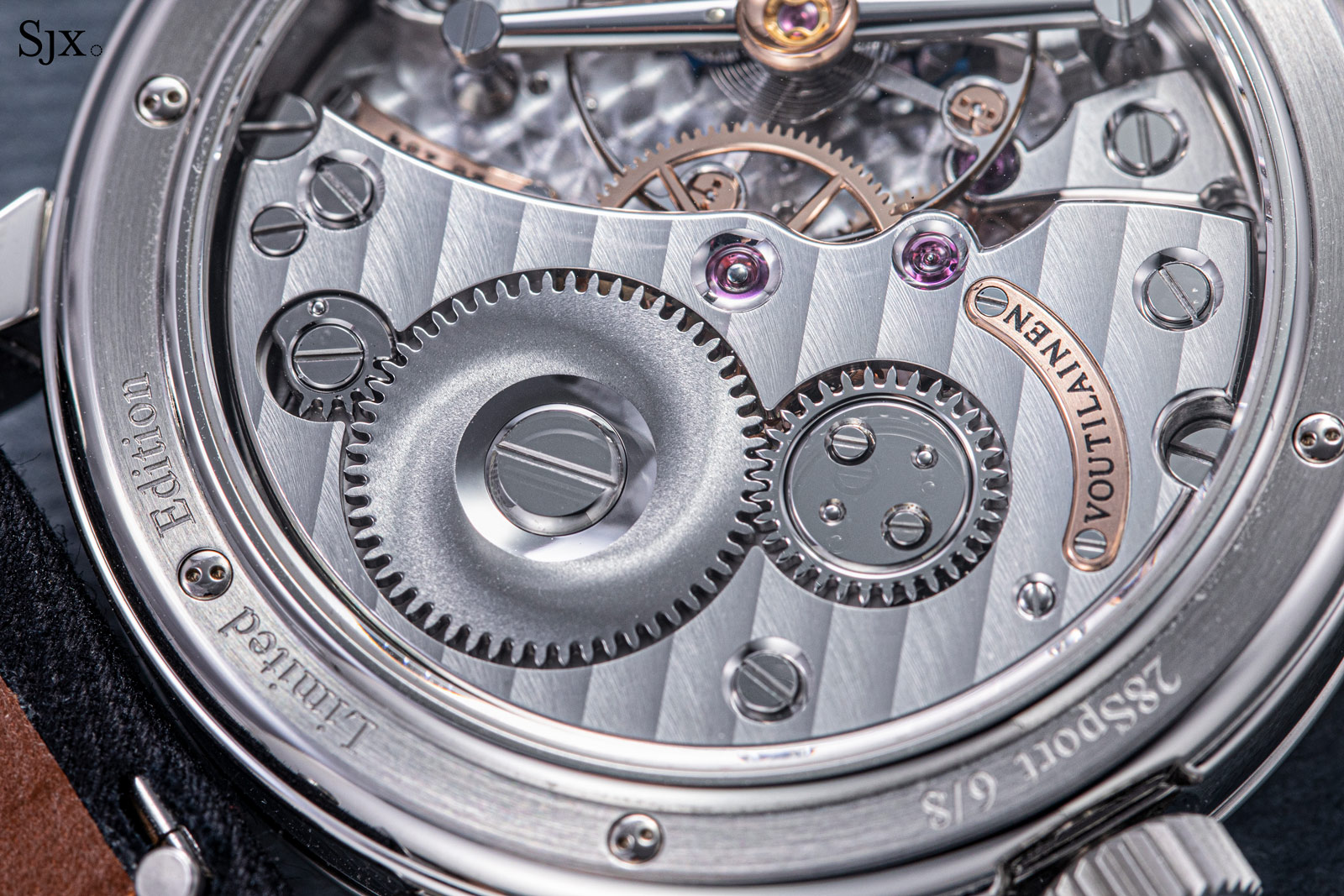
Numbered “6/8”, the 28Sport is almost new, having been first sold by an authorised retailer in October 2021. It has an estimate of HK$350,000 – 700,000, or about US$44,900-89,700. Full lot details here.
Lot 863: Ferdinand Berthoud FB1.3-1
When it comes to complicated watches, Ferdinand Berthoud might be a recently revived upstart, but it is one of the best in terms of movement construction and finish. An 18th century old name that’s dusted off in 2015 by Karl-Friedrich Scheufele, co-president of Chopard, Ferdinand Berthoud creates watches that are more akin to those made by a small-scale independent watchmaker – quite literally in fact, as the brand makes only about two dozen watches a year.
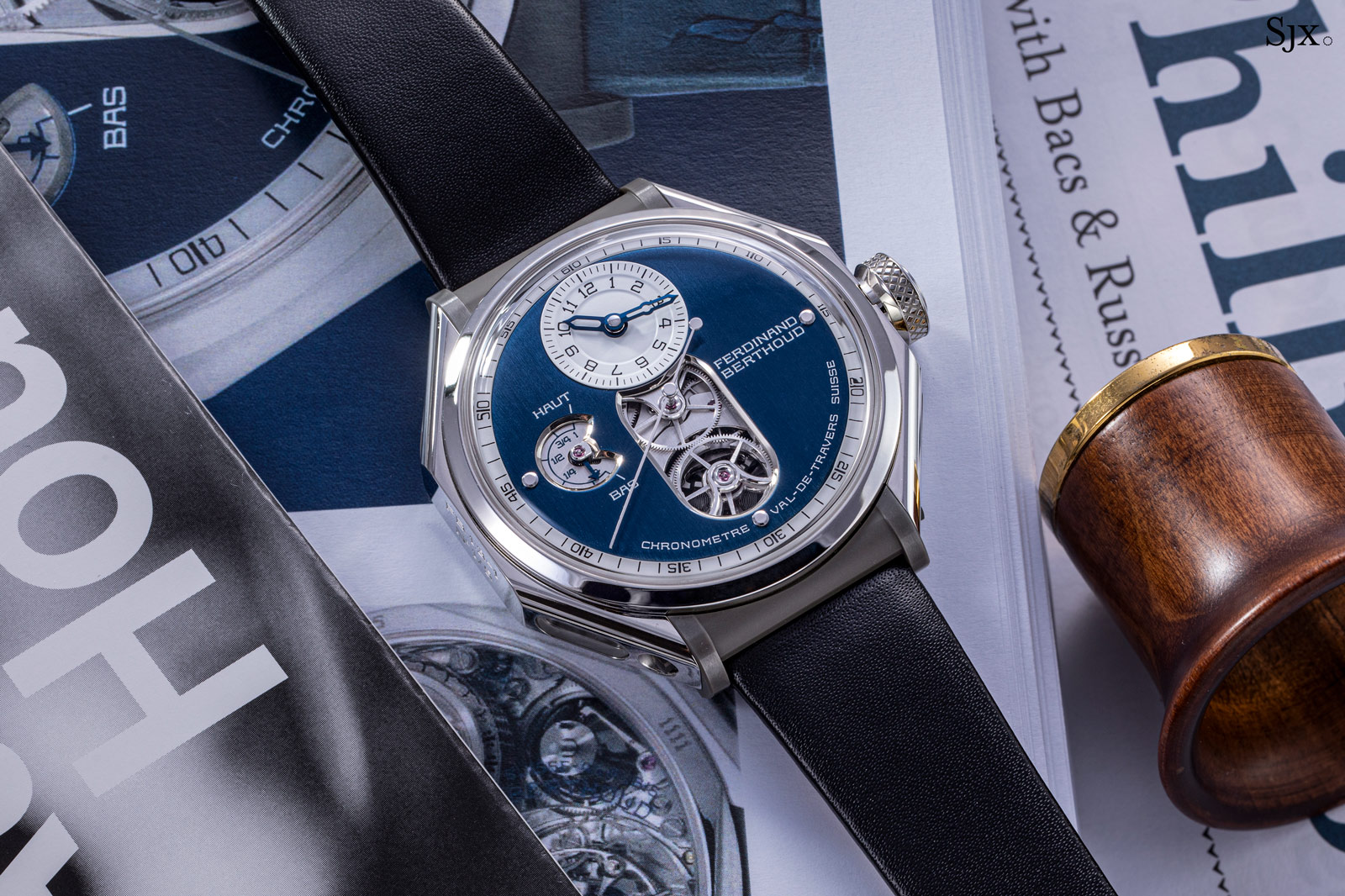
The first model from the brand was the FB1, a wristwatch inspired by 18th century Ferdinand Berthoud marine chronometers that were housed in a similar octagonal case, explaining the oddly-shaped case of the FB1.
There have been several iterations of the FB1 to date with the present example being the FB1.3-1, a limited edition of just five pieces launched in 2019 at Dubai Watch Week, the biggest watch fair in the Middle East.
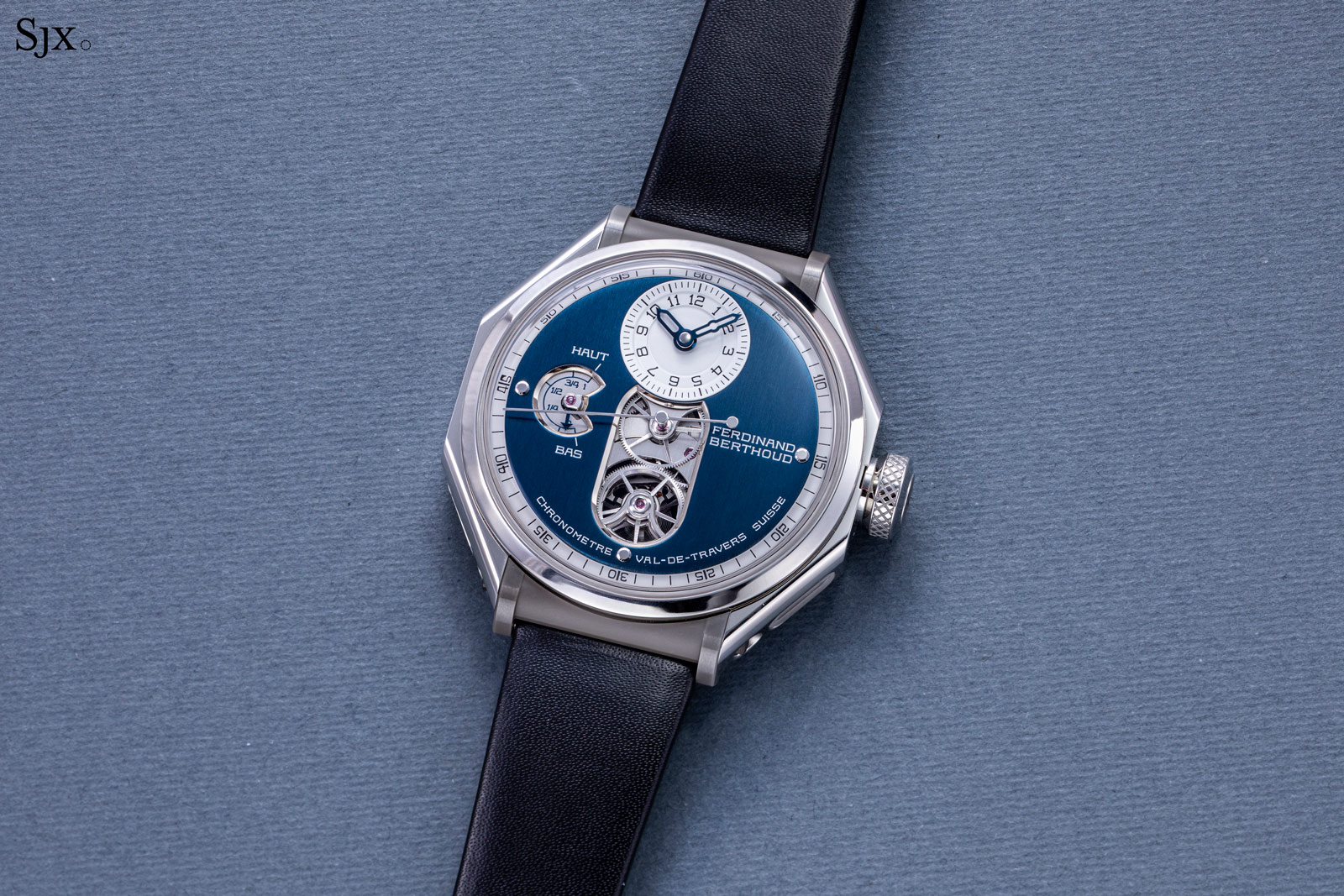
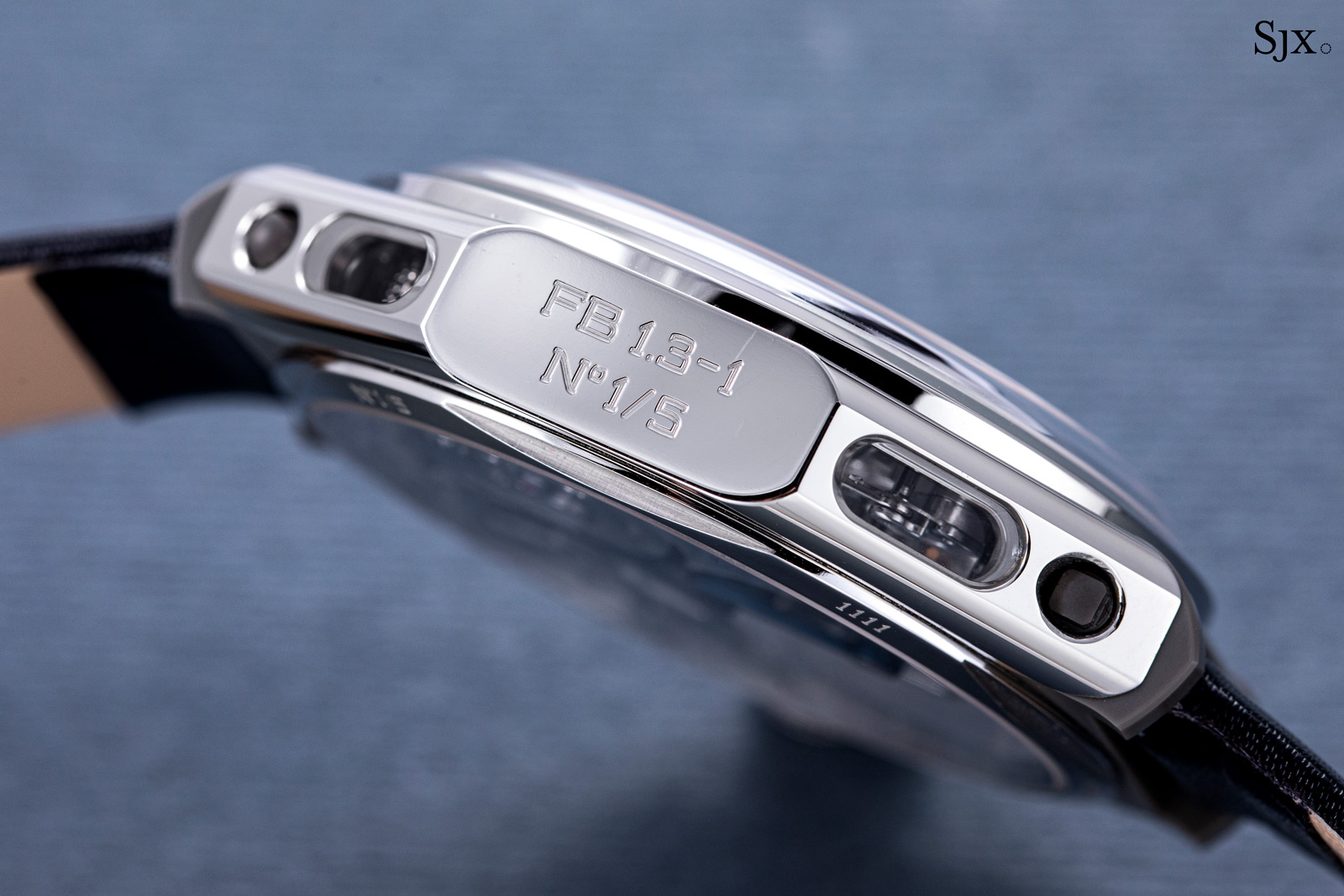
The FB1.3-1 retains the trademark octagonal case, but in platinum instead of gold. As is convention with the FB1, the case is actually two-tone since the end links in a different material, here they are in matte grey ceramic.
And the dial has been dressed up in a decidedly contemporary manner with a vertically brushed, bright blue finish.
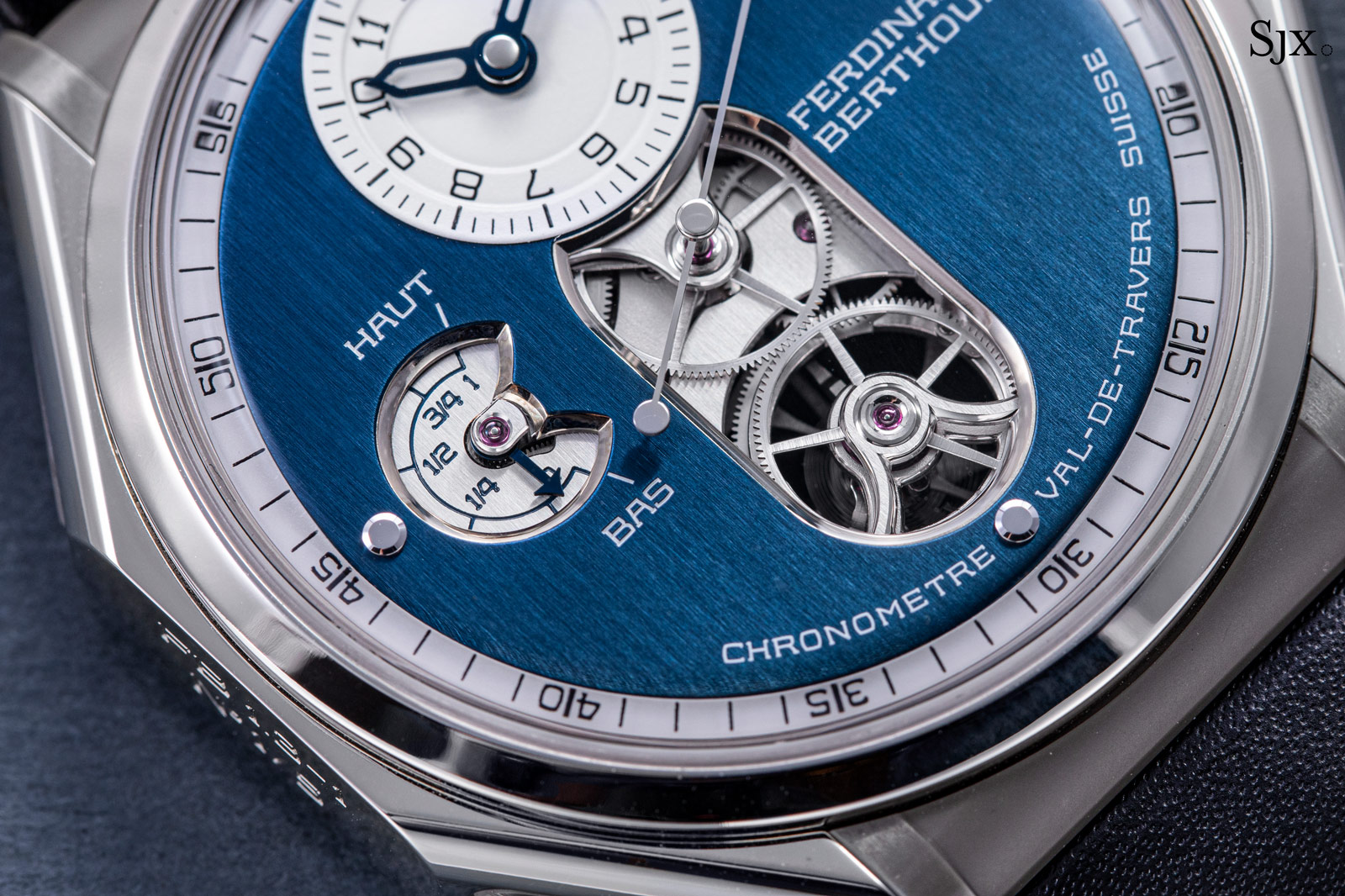
While the case shape is an acquired taste, the movement is unquestionably beautiful. It can be admired via the sapphire windows on the case side as well as the back. There are few recent movements that look that as good both at arm’s length and up close.
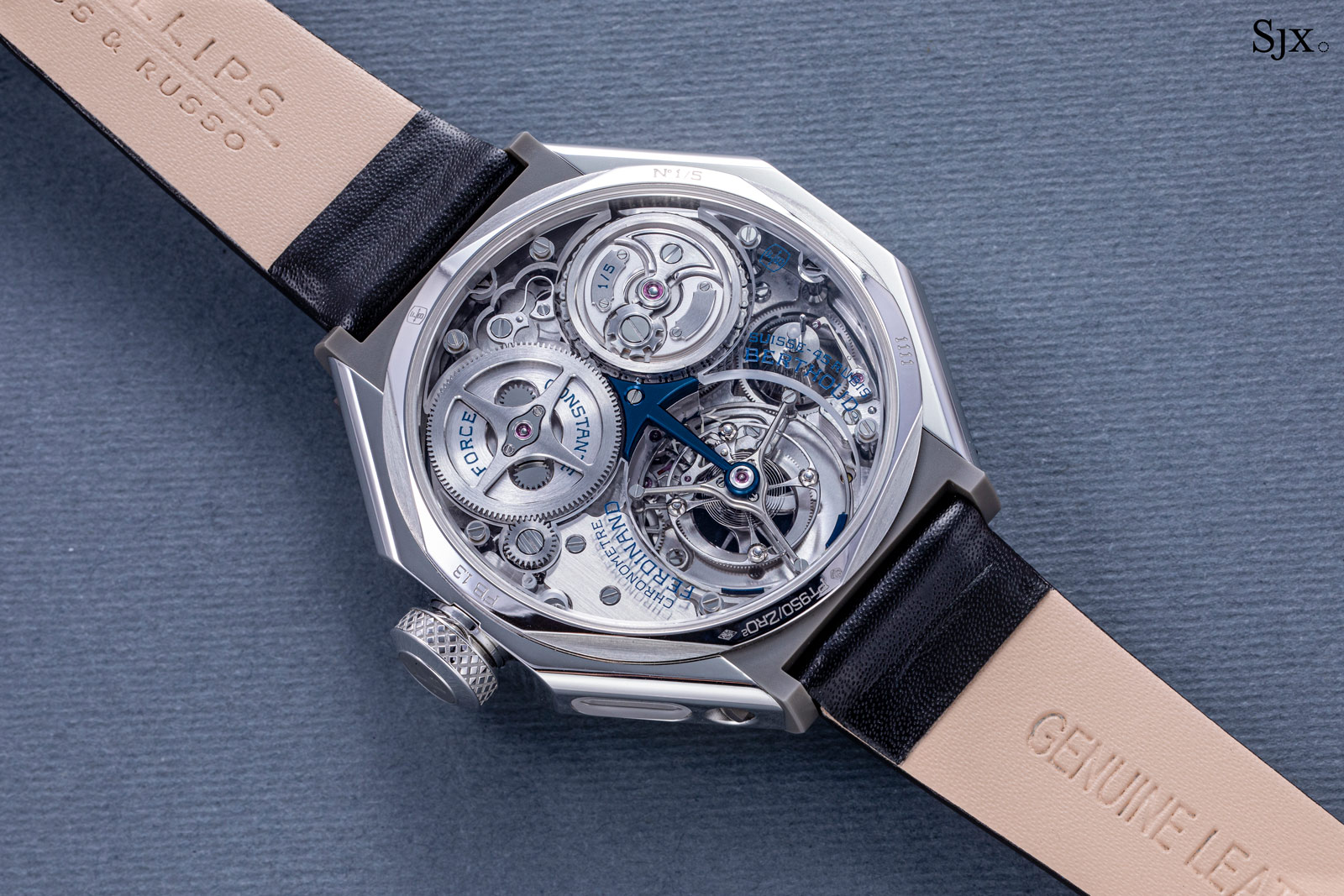
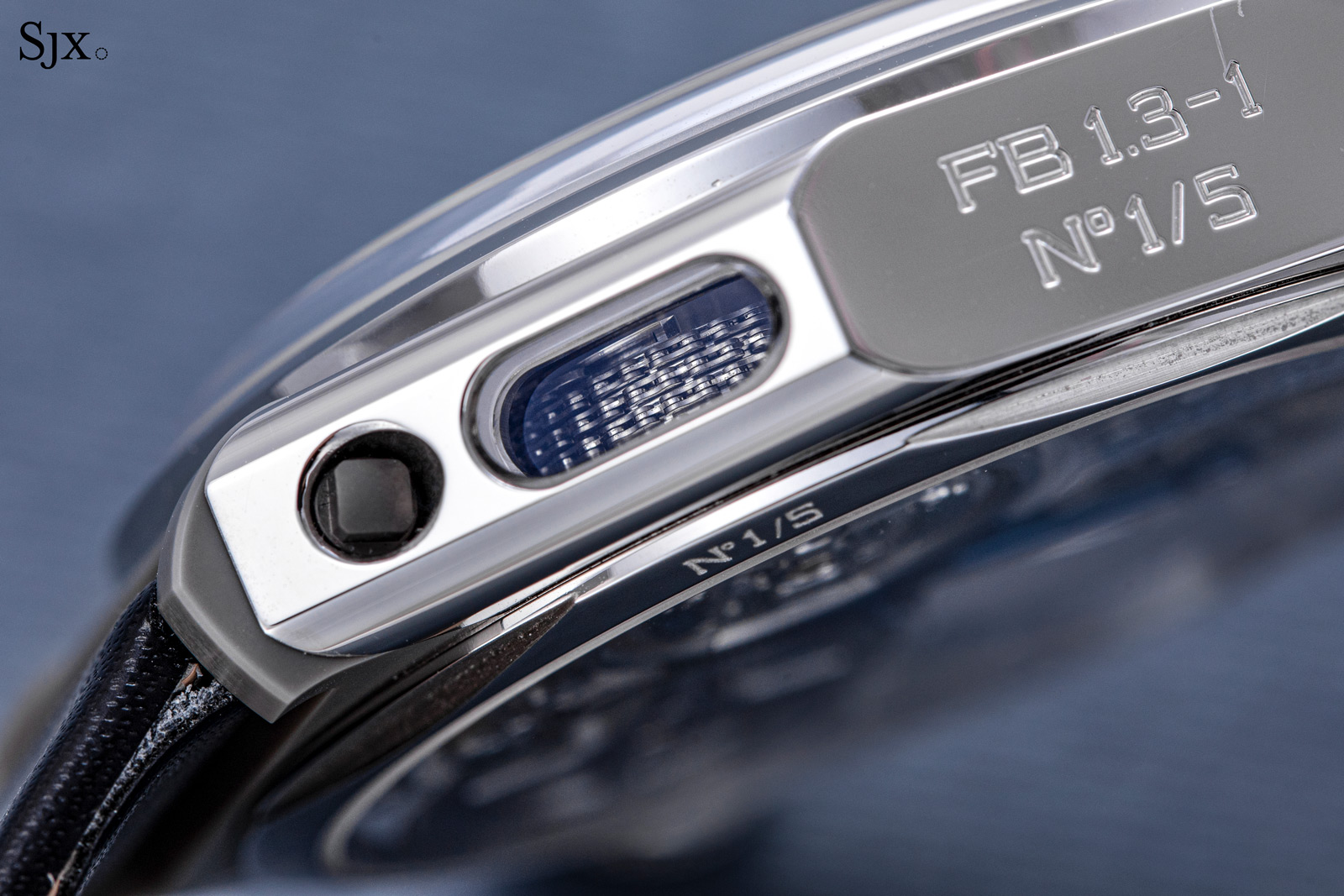
The movement is laid out in a logical manner with the top half occupied by the fusee-and-chain while the bottom half contains the tourbillon. Already impressive in its detail and depth, the movement is further enhanced with sapphire bridges. These were not found on the original FB1 and provide a look at the feeler-and-cone system for the power reserve indicator amongst other details.
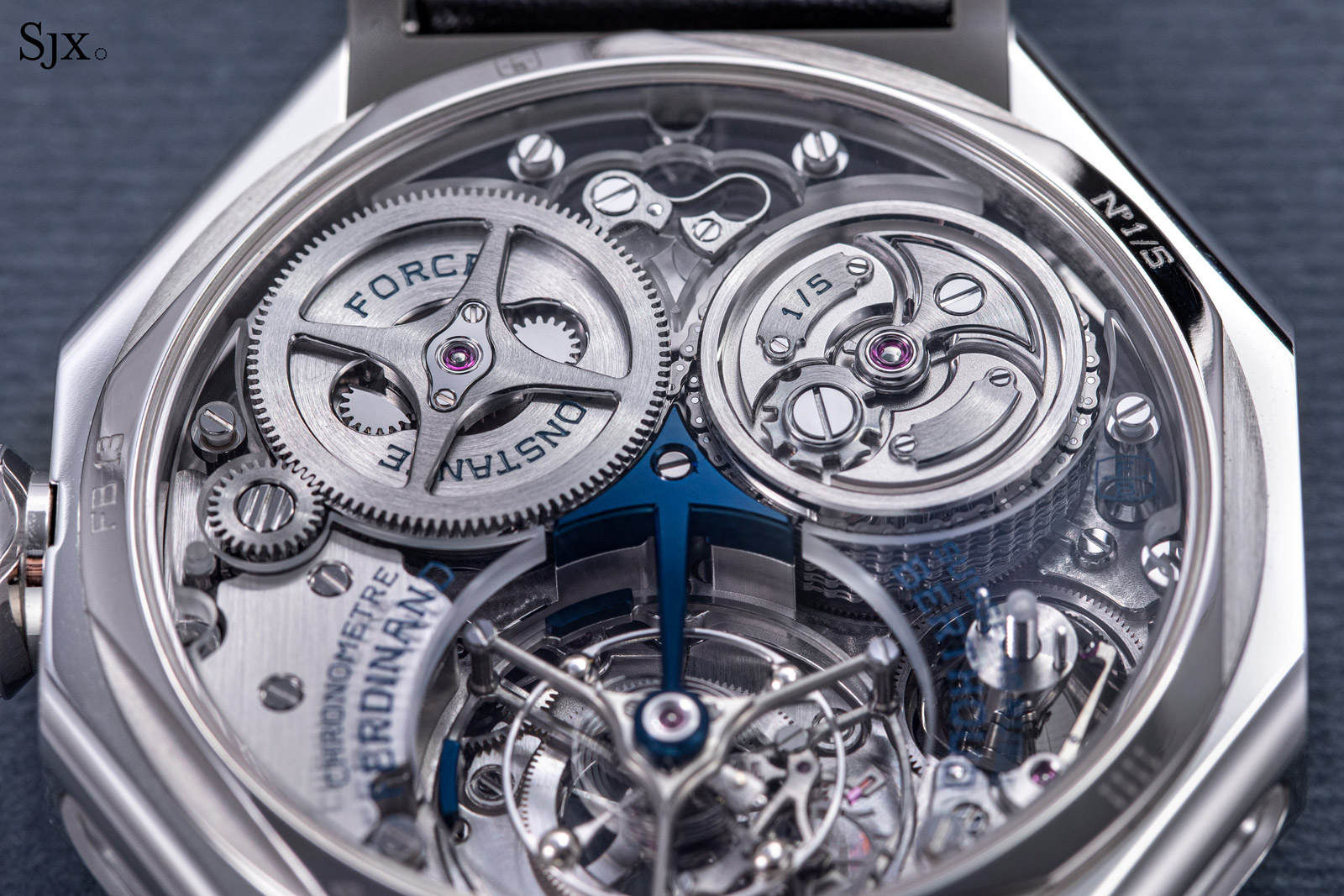
The three-dimensional construction allows the exquisite finish to be easily admired
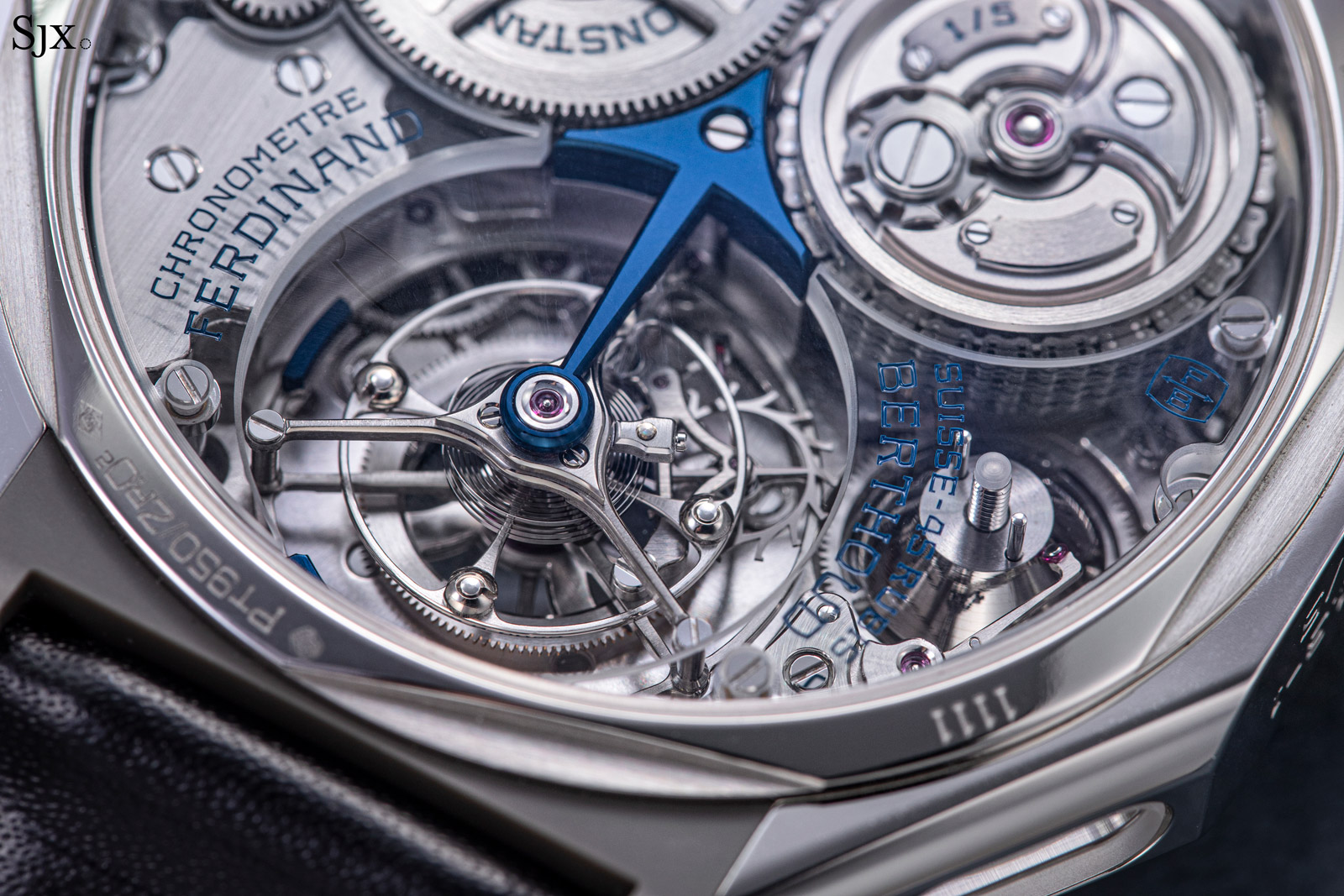
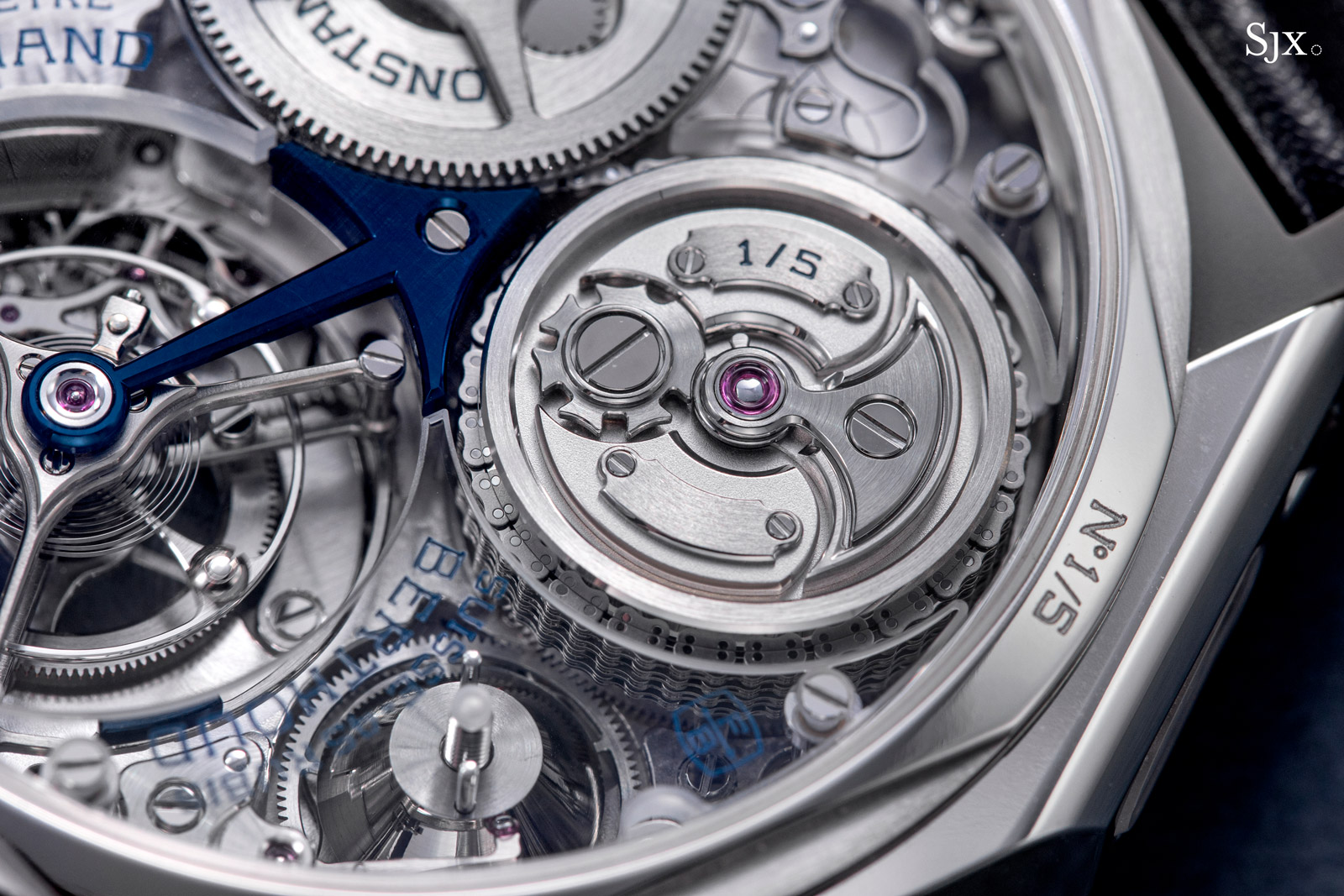
Numbered one of five, the FB1.3-1 includes its original packaging and has an estimate of HK$510,000-1.02 million, or about US$65,400-131,000. Full lot details here.
Lot 932: Lang & Heyne Friedrich II Remontoir “Prototype”
One of the most intriguing watches at the Hong Kong sale is the Friedrich II Remontoir by Lang & Heyne. Unique amongst the brand’s offerings in both style and mechanics, the watch is also literally a one-off in that it is a prototype.
Completed in 2021, the Friedrich II Remontoir resulted from a three-way collaboration between the German watchmaker, its Hong Kong retailer The Lavish Attic, as well as Phillips. The Friedrich II Remontoir is in essence a sports watch with an integrated-bracelet, but it manages to capture many of the brand’s key characteristics in both aesthetics and mechanics.
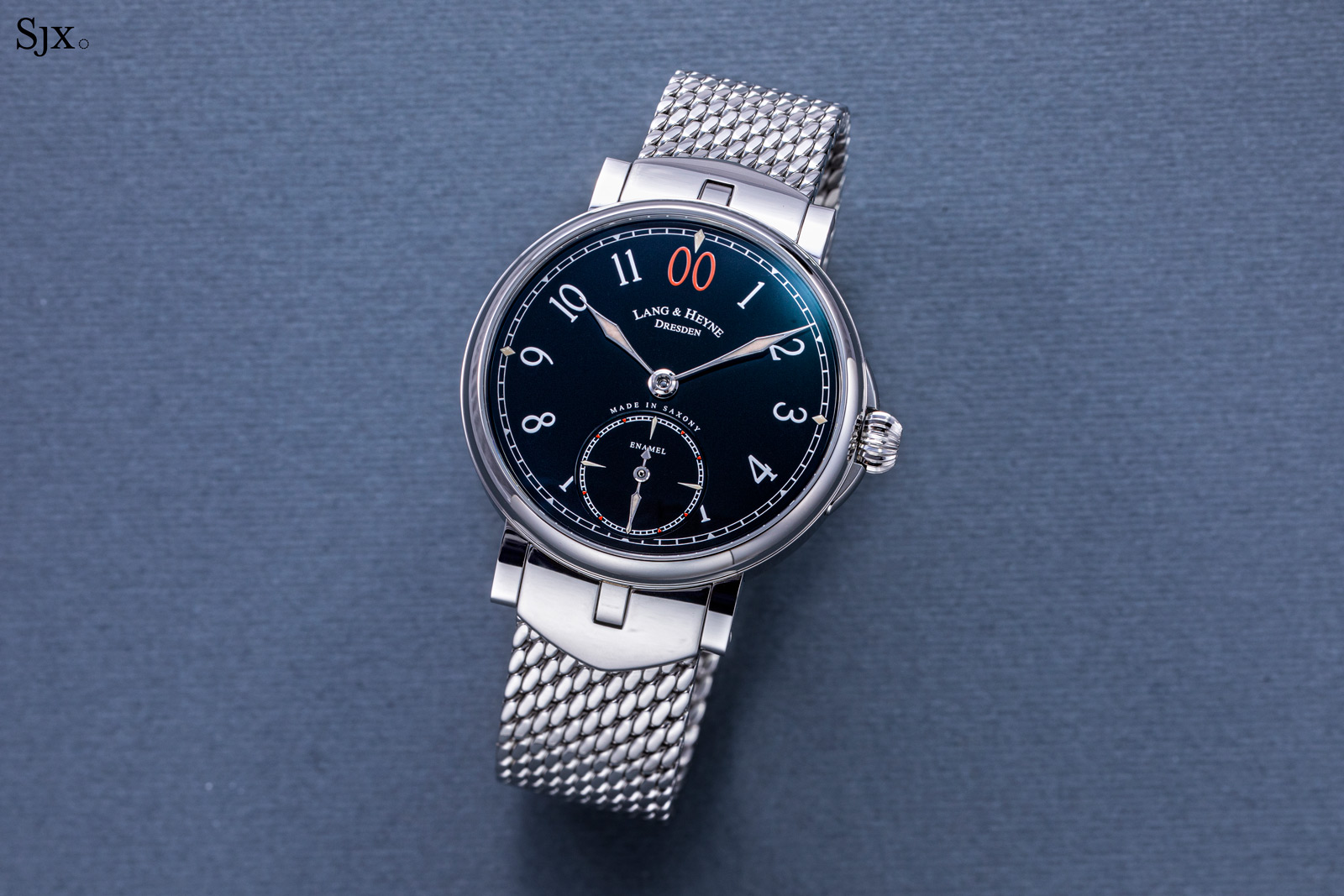
Although it is different from the brand’s usual classical fare, it is surprisingly appealing (and a lot more attractive than the Hektor sports watch that Lang & Heyne launched last year). In fact, it’s one of the brand’s most interesting and attractive creations since its last remaining cofounder Marco Lang departed in 2019.
While the watch appears modern at a distance, it is classical at heart. The dial, for example, is a black fired enamel but with oversized hour numerals that give it a dashboard instrument aesthetic. Add to that the red accents as well as the luminescent filling in the hands and the result is a traditional but sporty look.
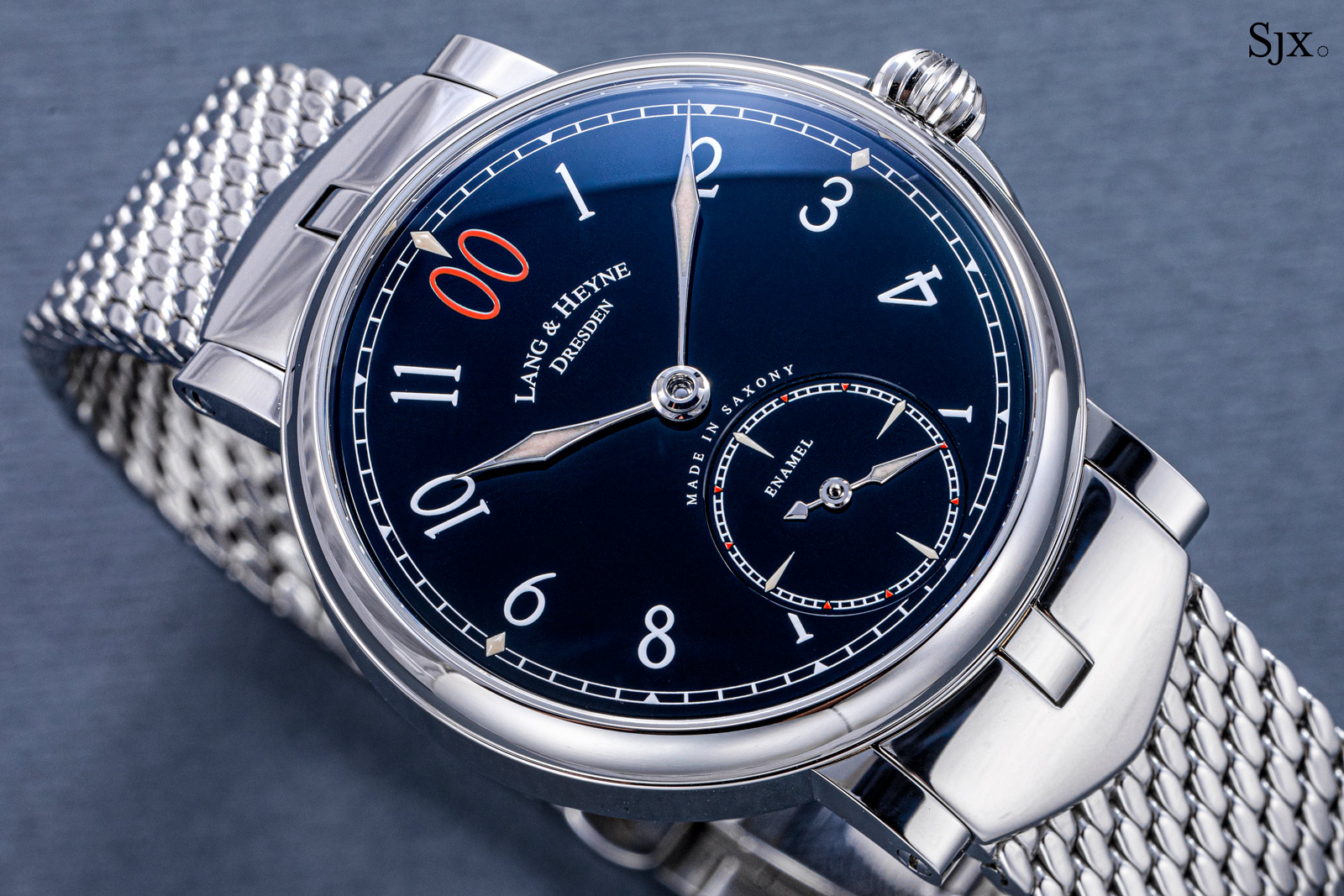
The dial is a two-part construction with a recessed sub-dial that’s soldered to the main dial
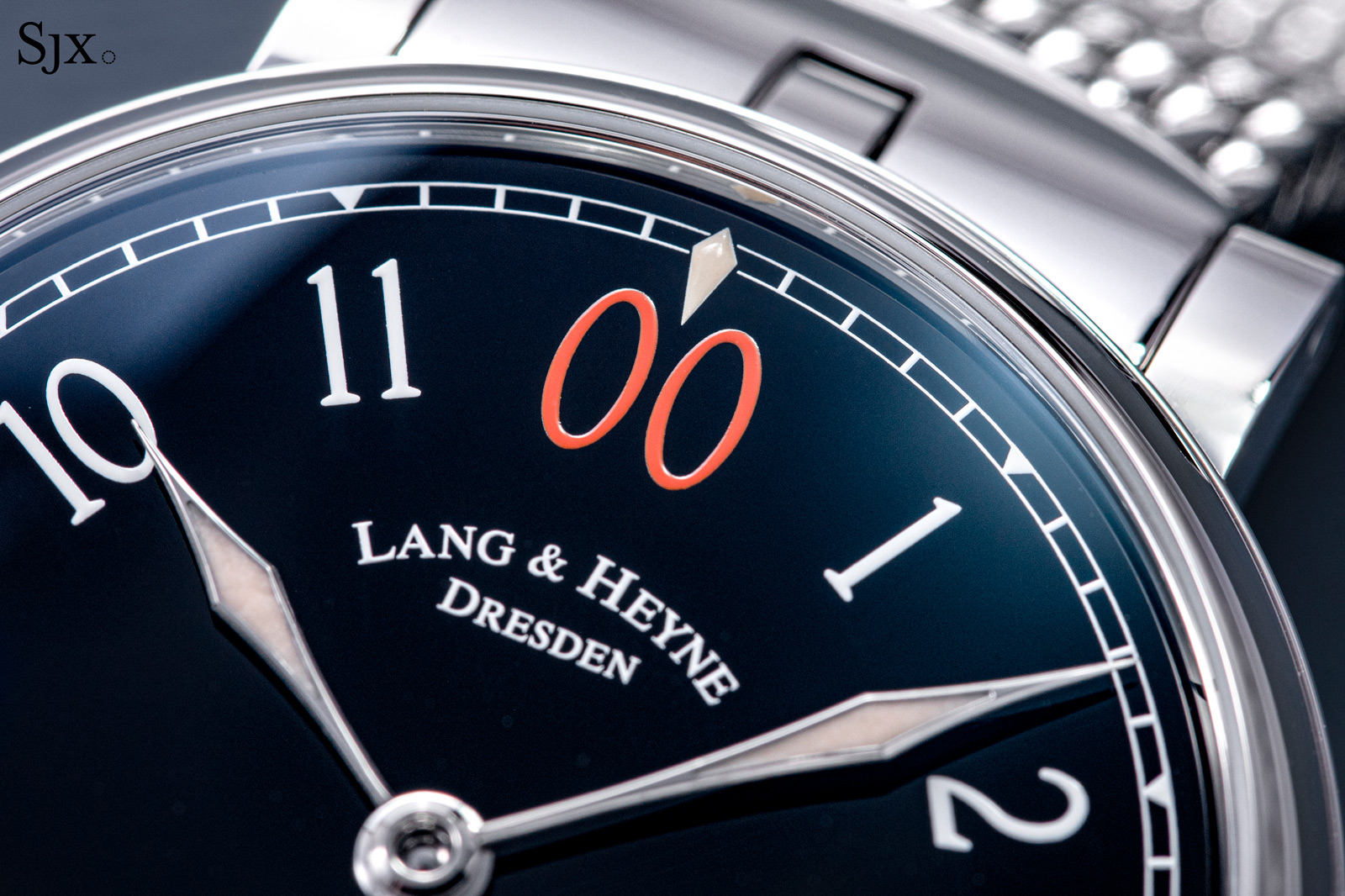
Interestingly, the watch has been fitted to a steel mesh bracelet, a first for Lang & Heyne but a feature that gives it a retro feel.
The bracelet is joined to end links custom that were made to fit the quirky, three-armed lugs that are a Lang & Heyne signature. Although the end links give the bracelet an elegant profile, their length and curvature means that the watch fits better on a larger wrist.
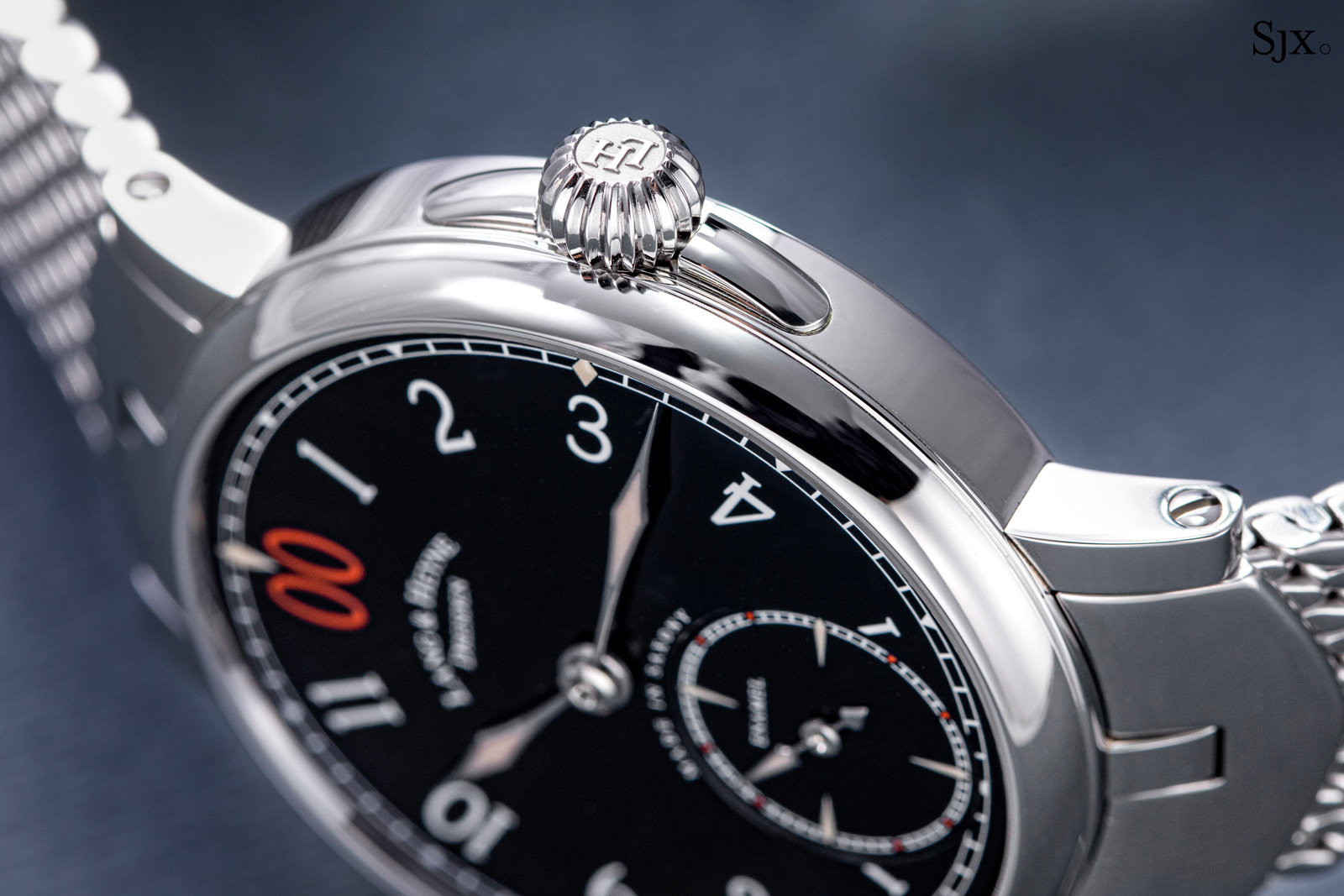
Besides helping design the watch, Phillips also helped shape the movement. Based on the calibre found in the standard Friedrich II, the movement appears similar but is substantially different.
For one, it has the addition of a remontoir in the escapement in the form of a tiny, secondary spring at the end of the gear train that stores and releases energy in small, fixed quantities, ensuring a constant amount of energy is supplied to the escapement regardless of the state of wind.
The remontoir was originally developed for the Konrad, a wristwatch with a centre seconds, date, and power reserve. Seen another way, the movement is actually a condensed version of the Konrad calibre that does away with the date and power reserve.
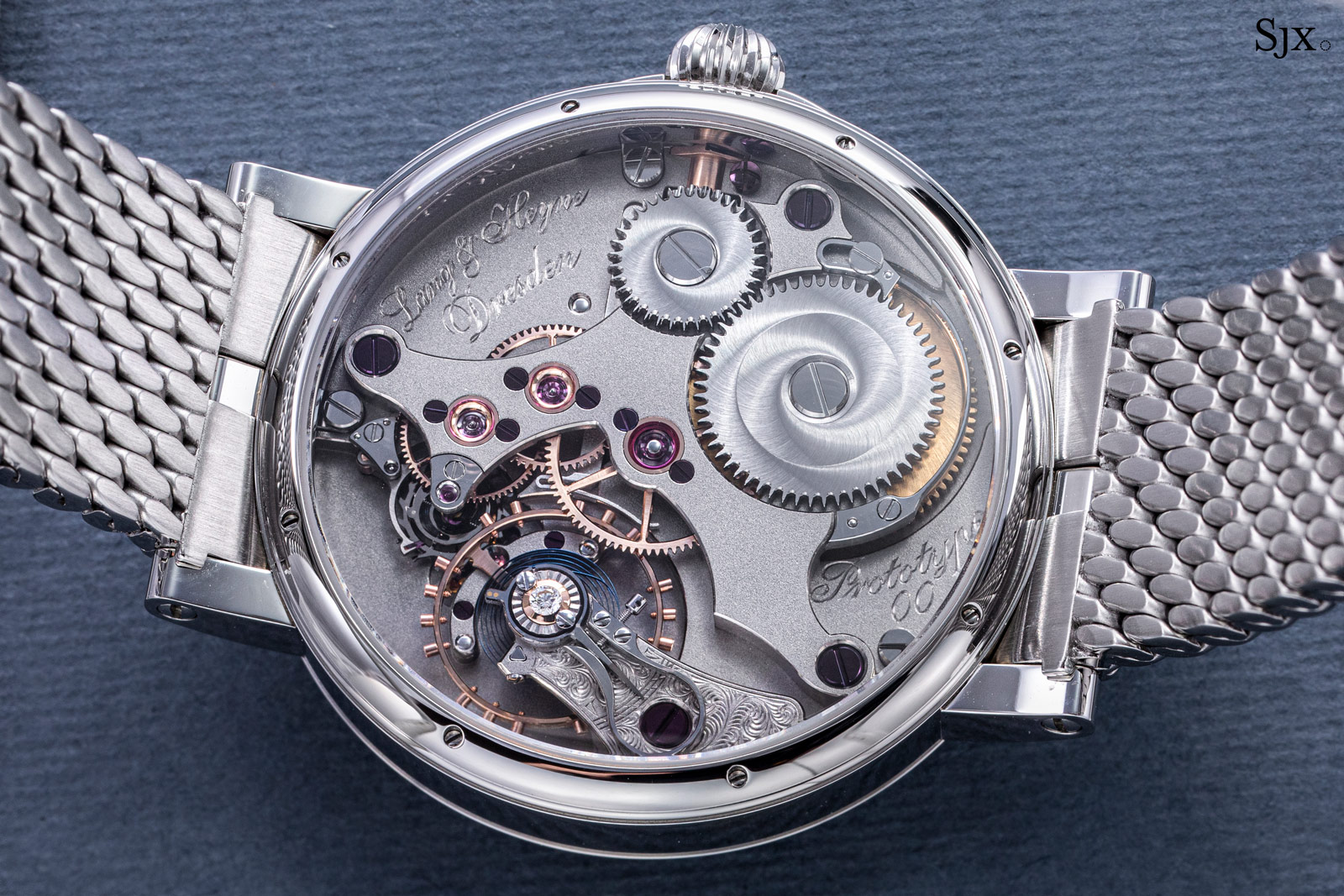
The screws are heated to achieve a purple hue instead of blue, such that it matches the greyish tone of the titanium baseplate and bridges
Because bridge for the movement has been designed to be minimal, the constant-force mechanism is revealed in all its glory. Located towards the left of the balance wheel, it sits under a black-polished steel cap. As with most constant-force escapements, the remontoir releases every second, allowing it to power a jumping seconds. According to the brand, the remontoir remains in operation for at least for the first 24 hours of the power reserve, but disengages once the mainspring falls below a certain level.
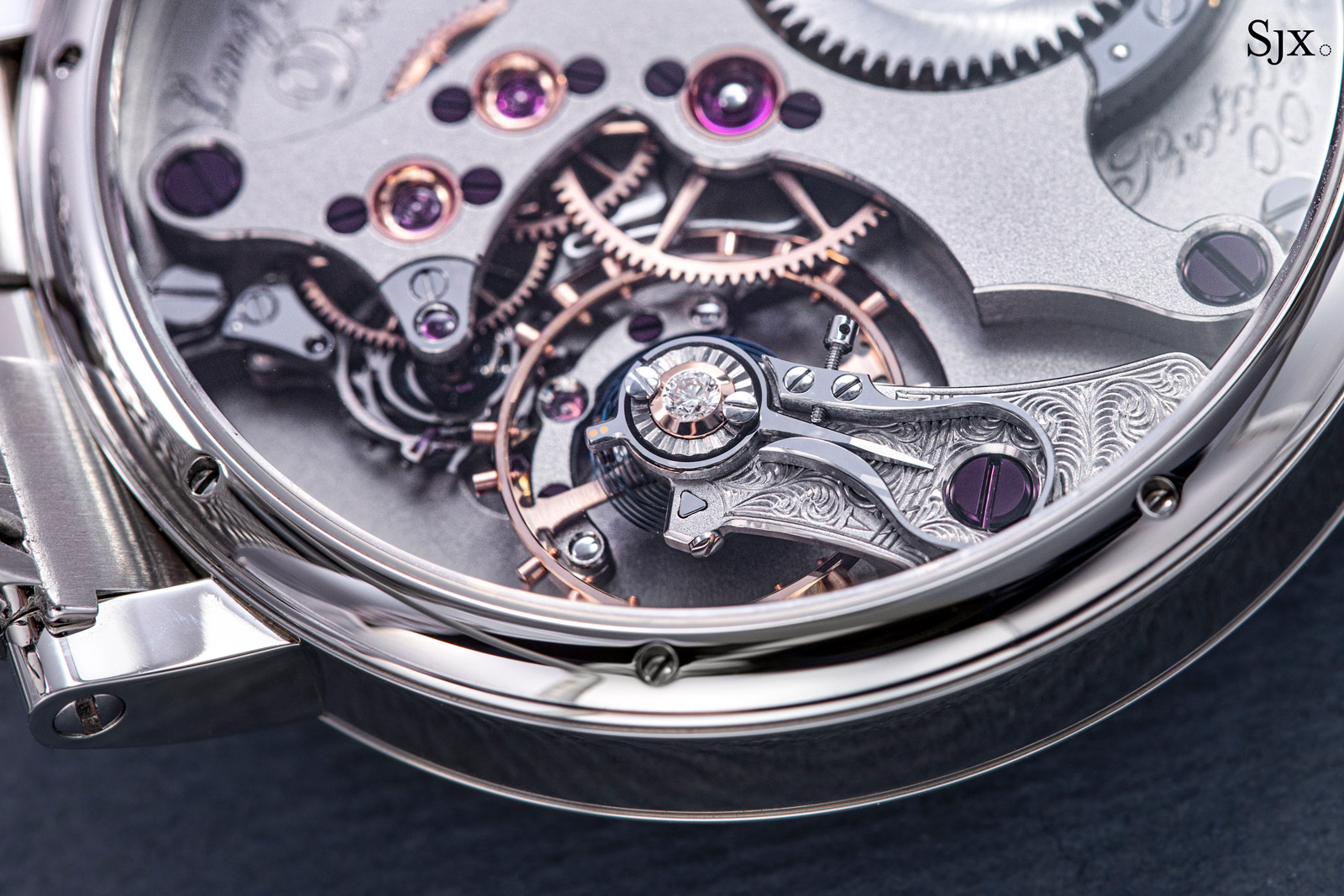
The floral engraving on the balance cock is extremely fine and complements the diamond endstone
But the calibre is more than just a rejigged Friedrich or Konrad movement. Instead of the traditional brass, the bridges and base plate are in titanium for maximum lightness and strength. Because the metal is harder than brass, the frosted finish was accomplished with a blasting process using ceramic beads, instead of the traditional metal brush technique.
But the rest of the movement decoration was done manually to the usual Lang & Heyne standards. The bevelling of the bridges, for instance, is done by hand using sticks of gentian wood and a variety of polishing pastes.
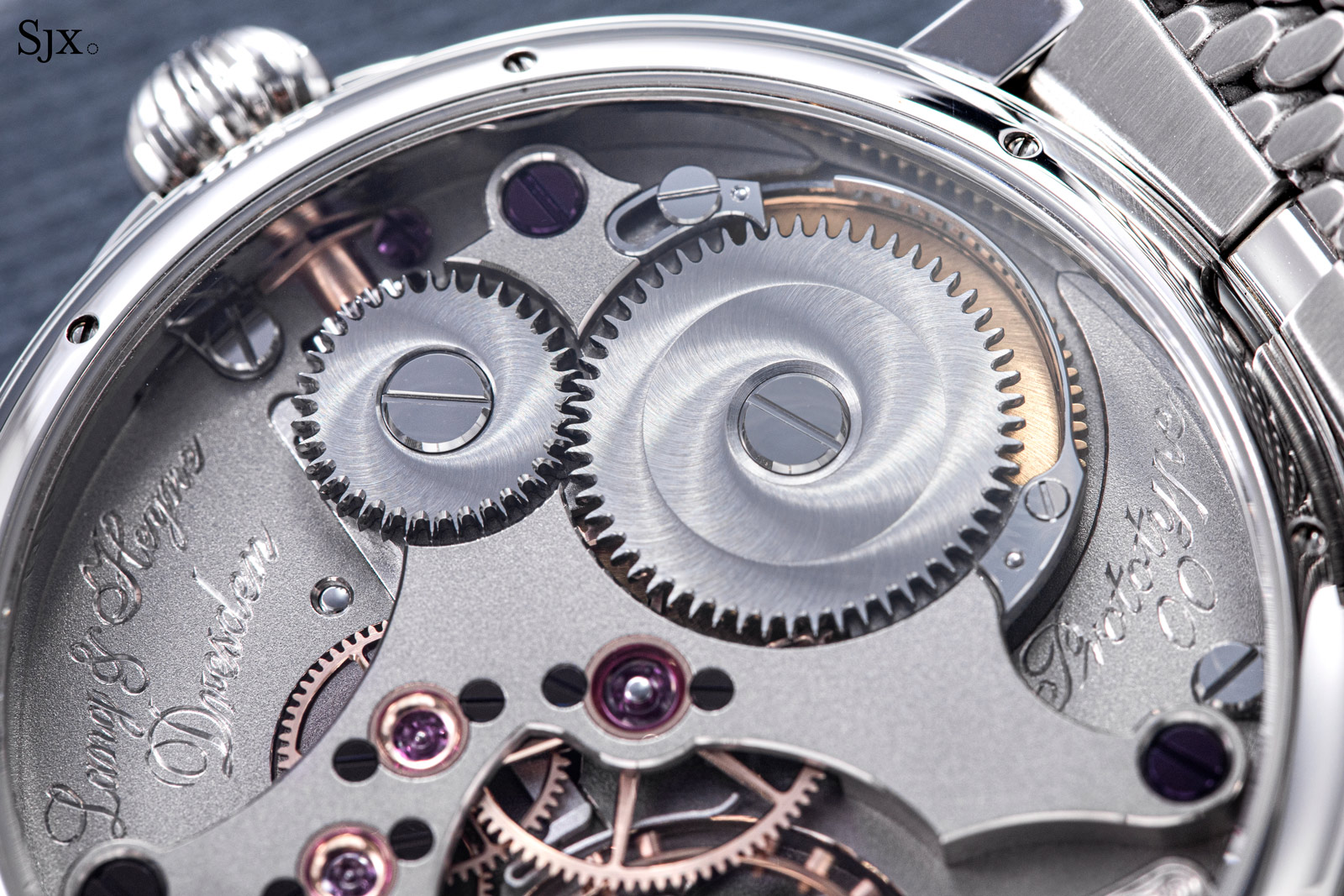
All of the engraving on the titanium base plate is done by hand
Brand new and fresh from Lang & Heyne’s workshops, the Friedrich II Remontoir has an estimate in excess of HK$460,000, or about US$59,000. Full lot details here.
Lot 942: De Bethune DBS-R
Launched in 2005, the DBS was significant for De Bethune as it was one of the brand’s first models with an avant-garde design that moved away from the classical style of its earlier models.
The DBS has an unusual, asymmetrical case, but most notable is the open-worked dial that became a defining feature for most of the models that followed. In fact, the DBS is notable for inverting the movement and bringing the delta-shaped bridge to the front, instead of relegating it to be back as on previous models.
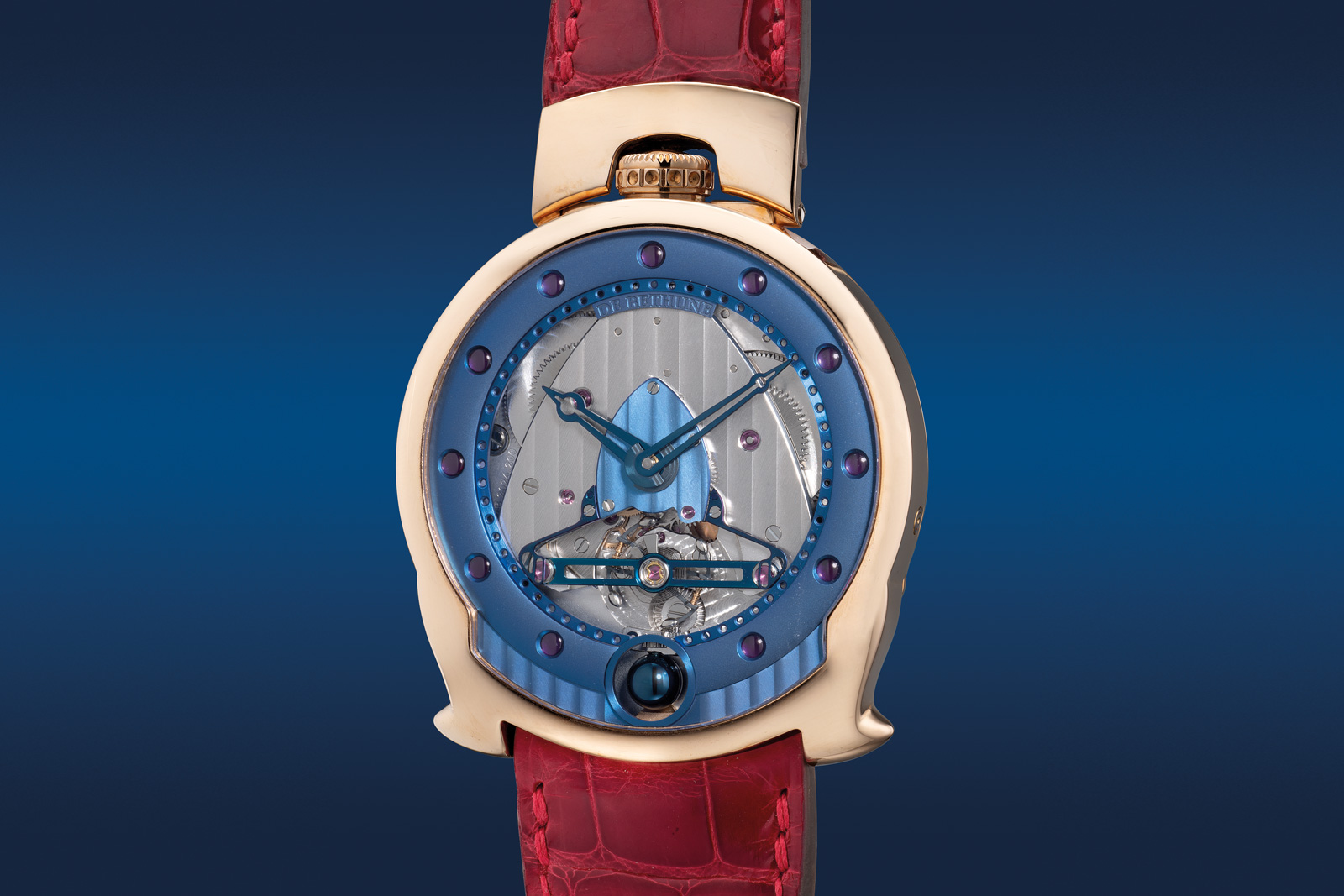
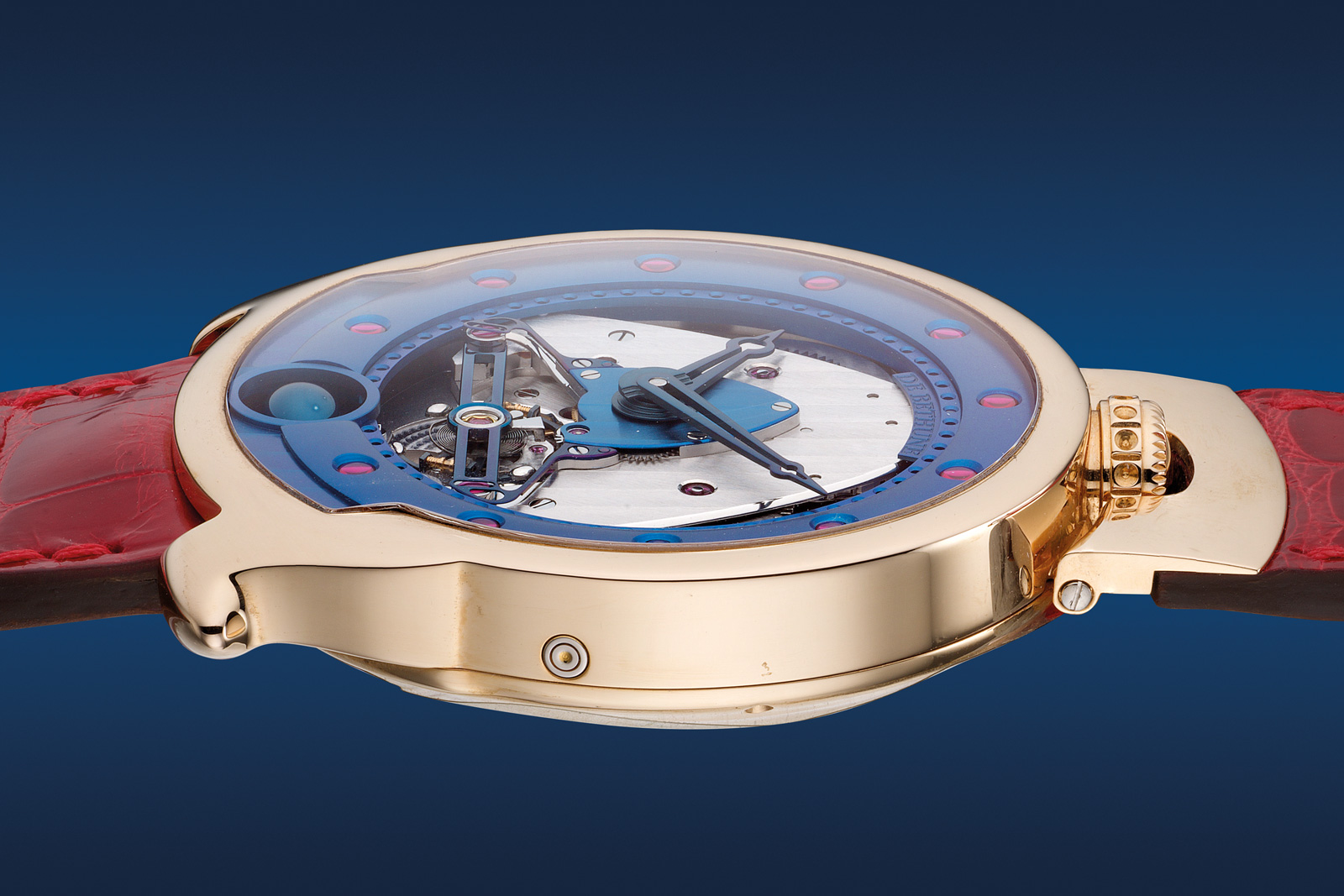
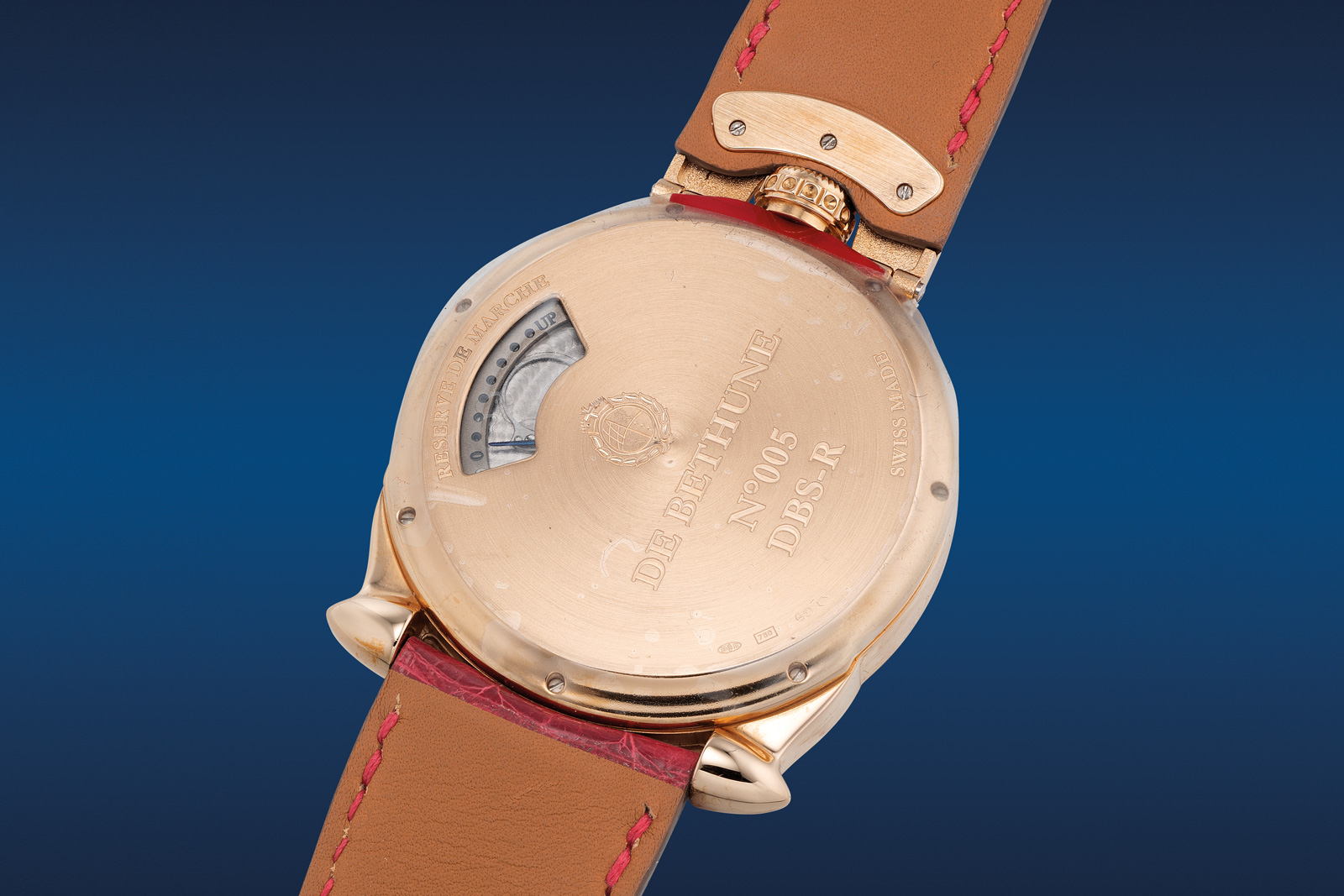
But the original DBS was relatively muted since most were in white gold with a rhodium-finished movement, resulting in little contrast between the two.
The present example is a DBS-R, with the suffix indicating a rose gold case, though it is much more than that. According to Phillips, this unusual combination was likely custom order, making it possibly unique.
It has a high contrast finish with the wide chapter ring in pale blue, along with ruby hour markers, immediately giving it a more contemporary look. The small, delta-shaped plate for the canon pinion under the hands is also in blue to match.
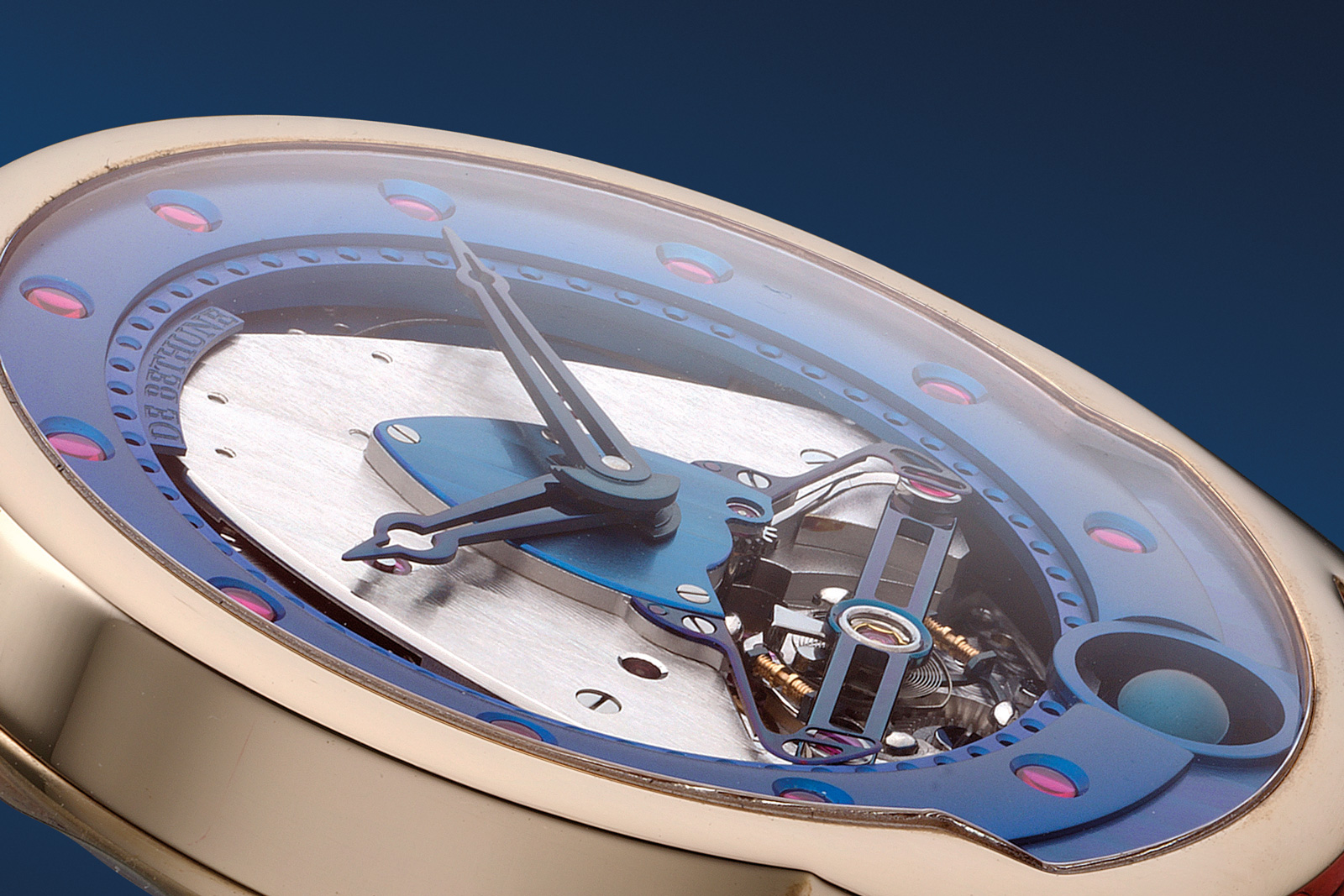
The DBS–R is an unusual version of an unusual watch; it’s neither classical or futuristic, but easily recognisable as De Bethune. It has an estimate of HK$625,000-1.25 million, or about US$80,100-160,000. Full lot details here.
Lot 963C: F.P. Journe Tourbillon Souverain “China 2010”
The successor to F.P. Journe’s original tourbillon of 1999, the Tourbillon Souverain (or “TN” for short) was the base for a variety of small-run limited editions, with more than a dozen of editions created over its 15-year production run.
One of the boldest is the Tourbillon Souverain “China 2010” made to commemorate the opening of the brand’s first boutique in the country that was located in Beijing. It has a red lacquer dial and a power reserve scale made up of five gold stars, a motif inspired by the national flag of China.
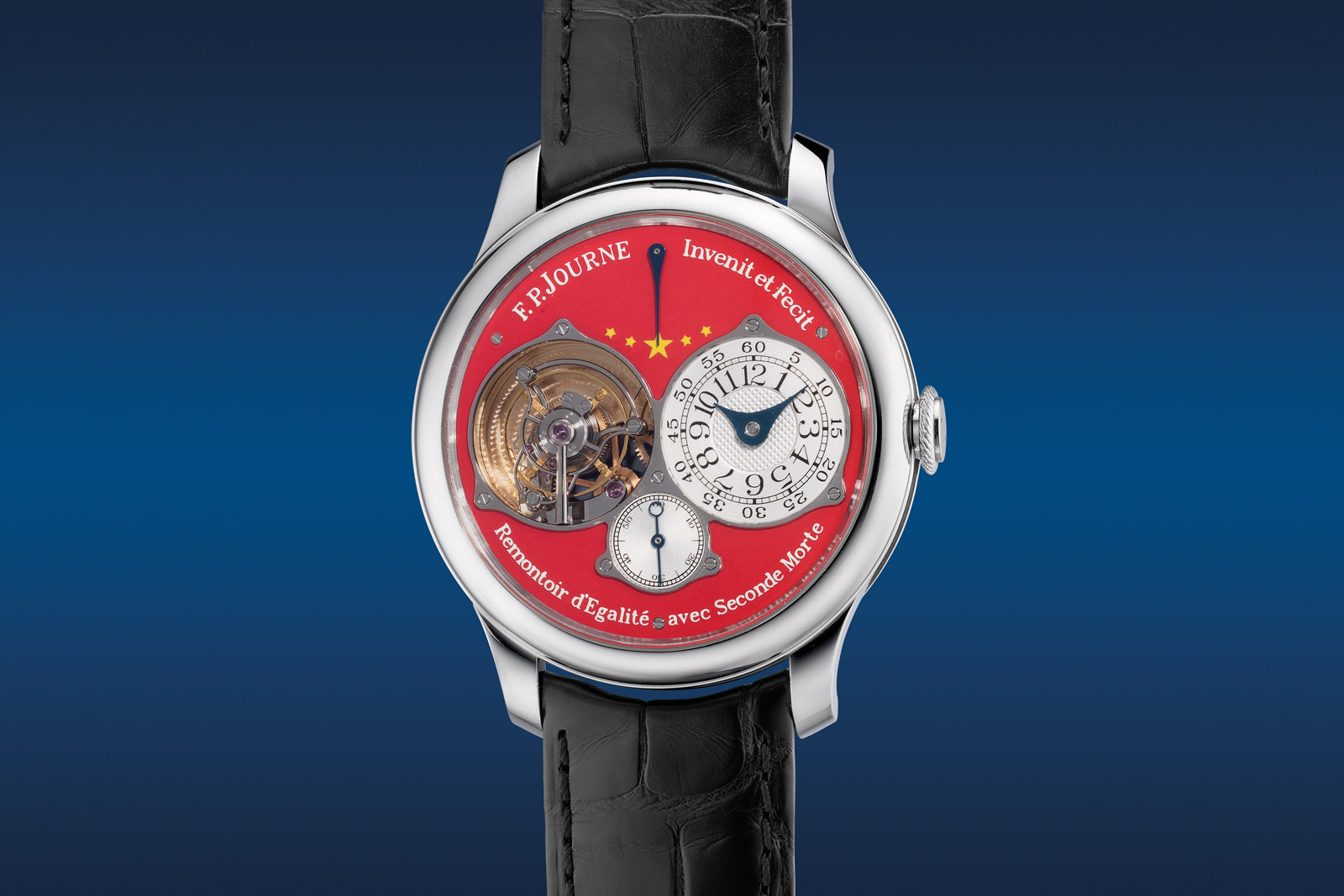
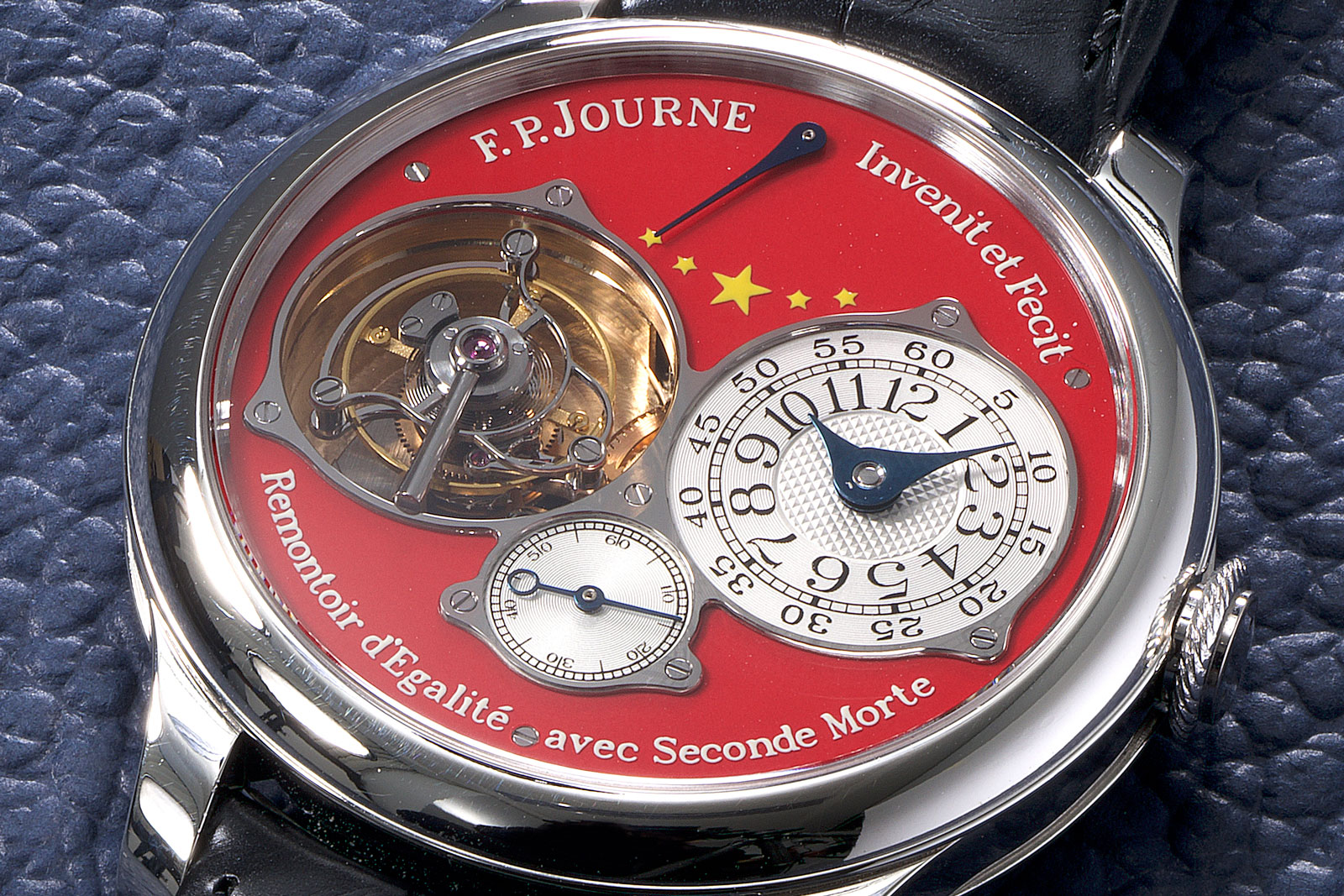
This was possibly the first and only example of the Tourbillon Nouveau with a non-numeric power reserve scale
As is the norm for special edition TNs, the China edition is distinguished by its dial. The rest of the watch is identical to the standard model. It has a 40 mm platinum case with a solid-gold movement.
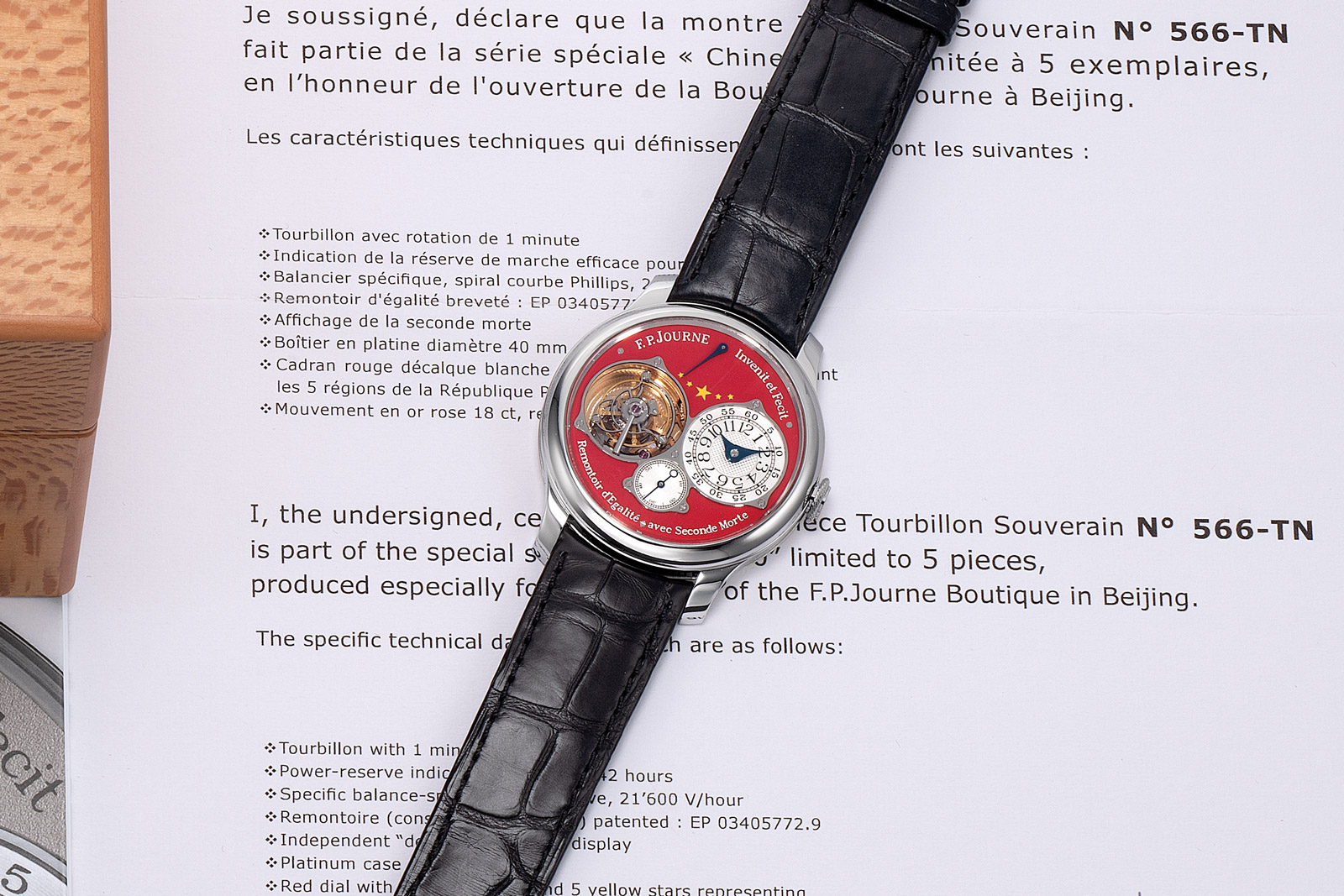
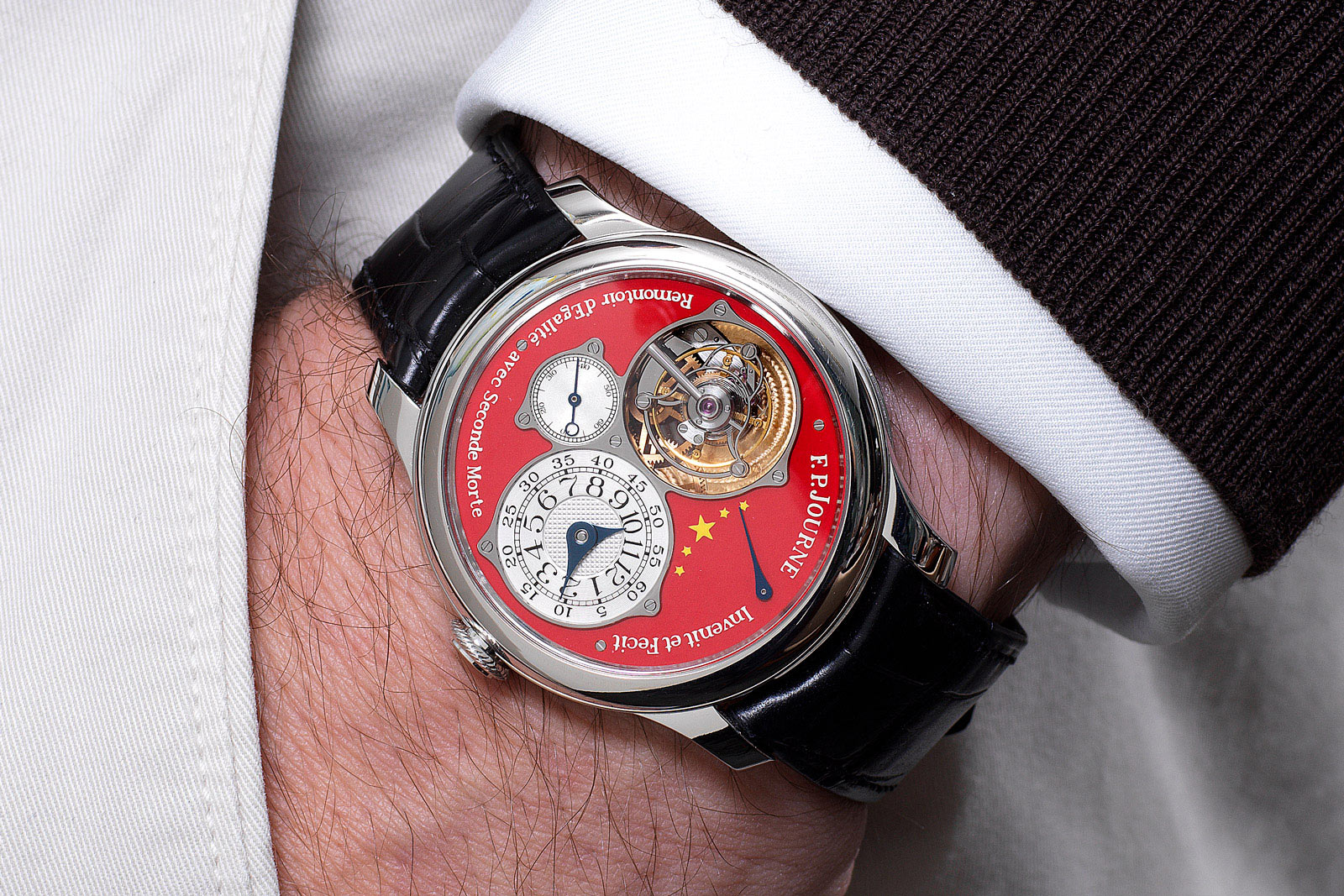
The red dial is striking and atypical for the brand
The China edition is amongst the rarest of TN editions, with only five having been made. Adding to the desirability is the ironic fact that the Beijing boutique is long closed, making another edition impossible.
And therein also lies the irony: business was tepid at the Beijing boutique for as long as it was open, but now F.P. Journe has become so desirable that the low estimate for this watch is multiples of its original retail price.
Including its original box and certificate, this has an estimate of HK$3.9-7.8 million, or about US$500,000-1.0 million. Full lot details here.
Preview and auction details
All lots will be on show during the preview exhibition in the run-up to the auction. Both the auction and preview will take place at the JW Marriott Hotel in Pacific Place.
Preview
Open daily May 24-28 from 10:00 am-7:00 pm
Auction
May 27, 2:00 pm (lots 801-963C)
May 28, 2:00 pm (lots 965-1123)
All times are local to Hong Kong, GMT+8.
JW Marriott Hotel
88 Queensway
Admiralty
Hong Kong
For the full catalogue, as well as viewing appointments and online bidding, visit Phillips.com.
This was brought to you in collaboration with Phillips.
Correction May 20, 2022: The Voutilainen case is steel, and not titanium as indicated in an earlier version of the article.
Back to top.
